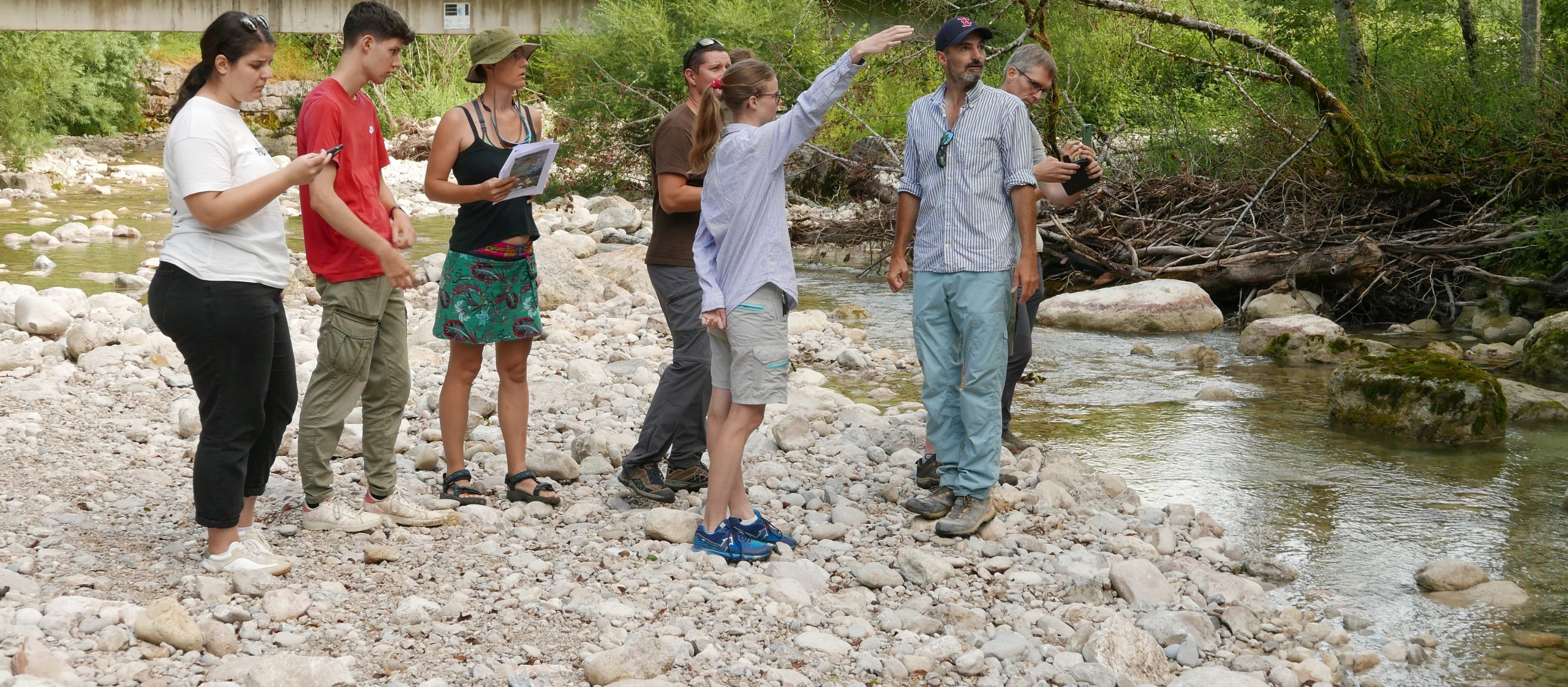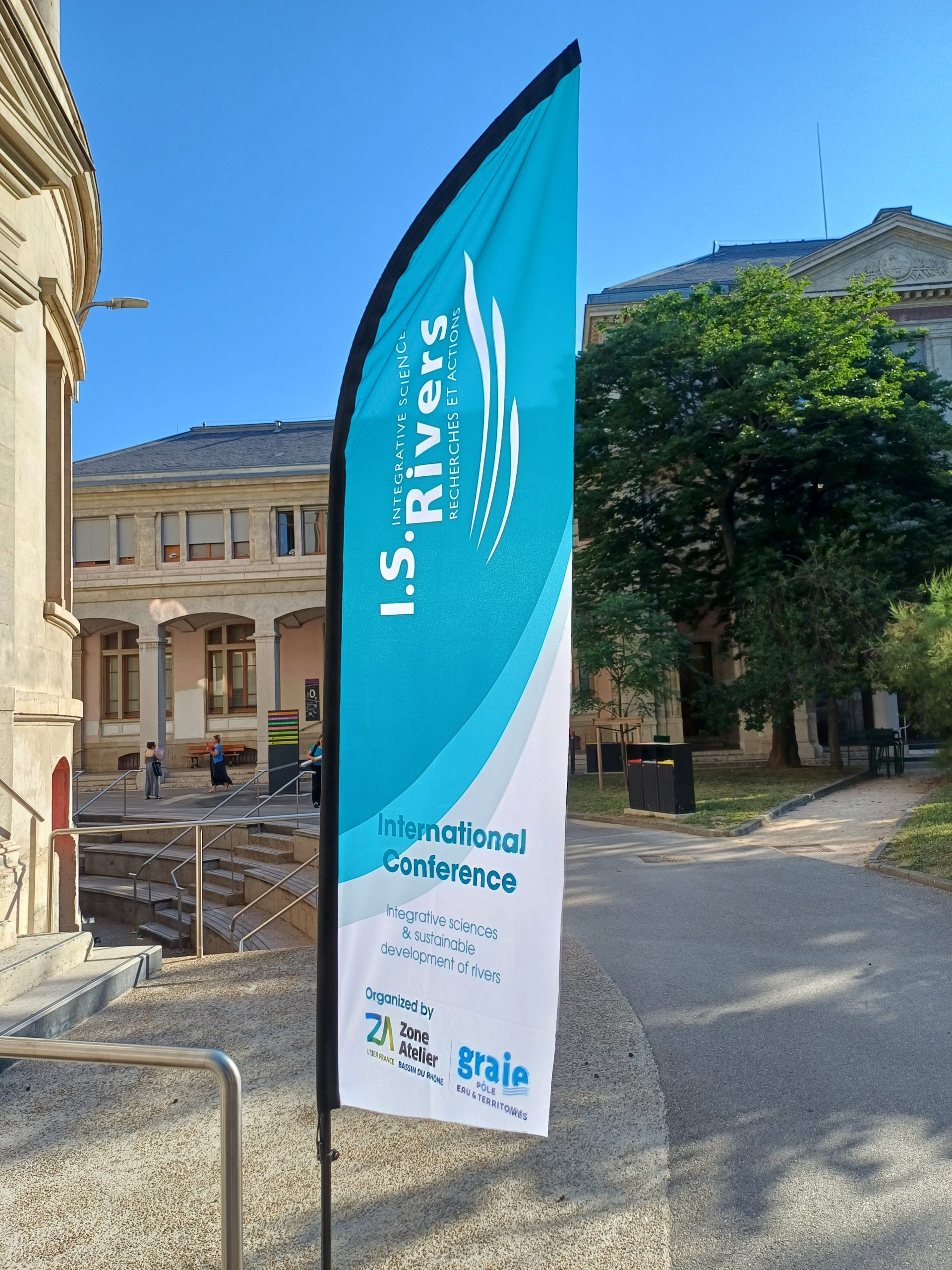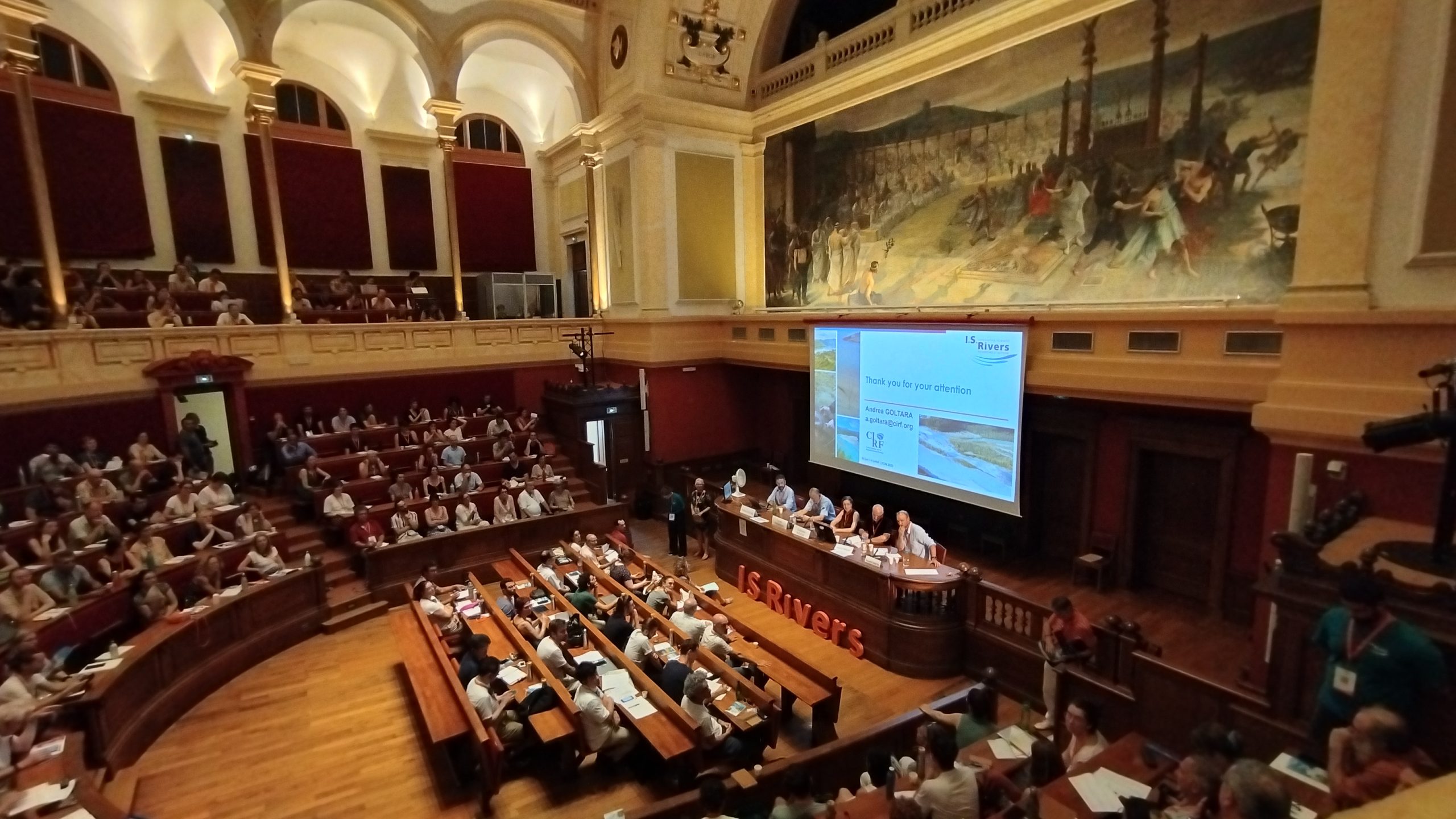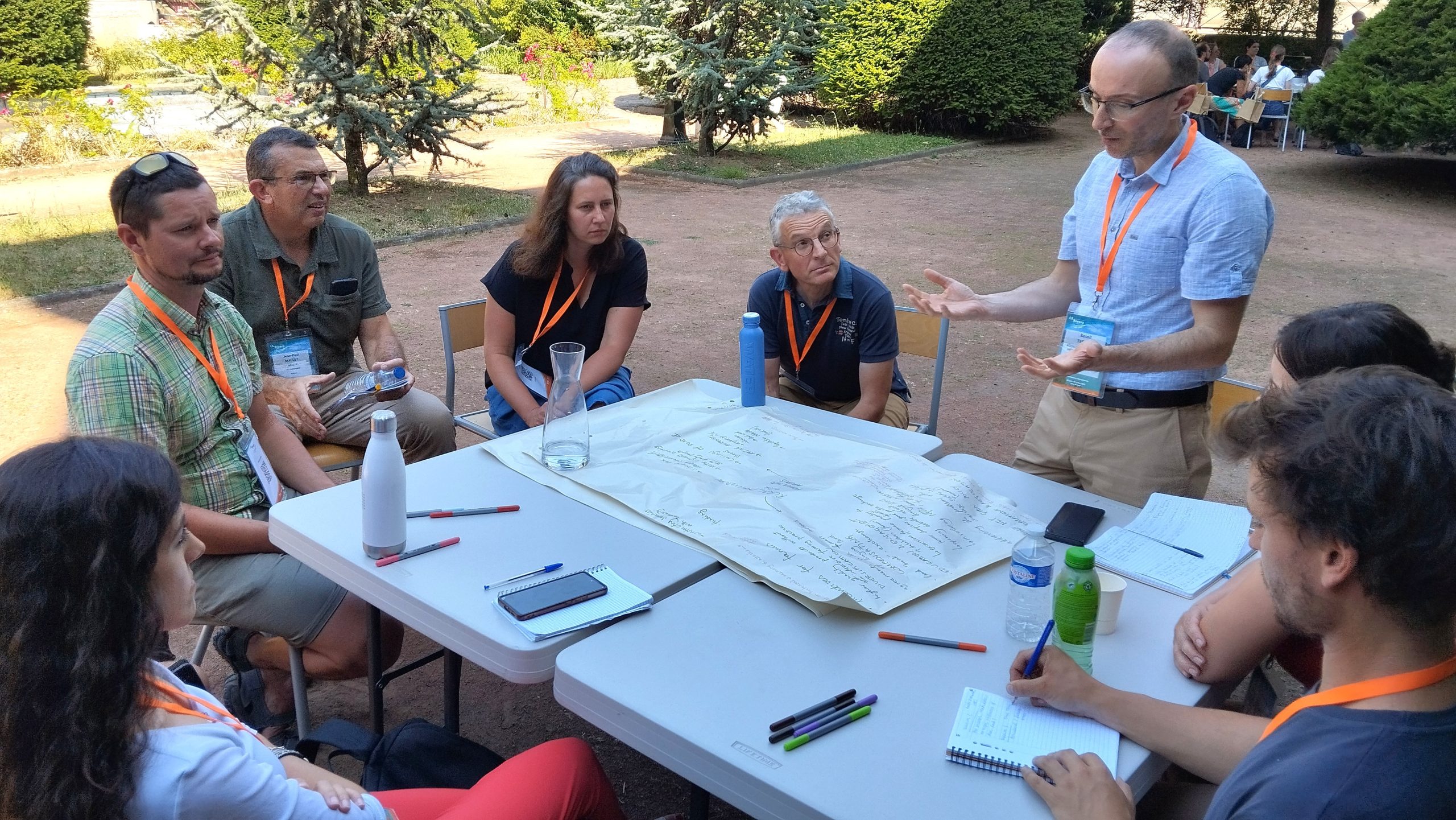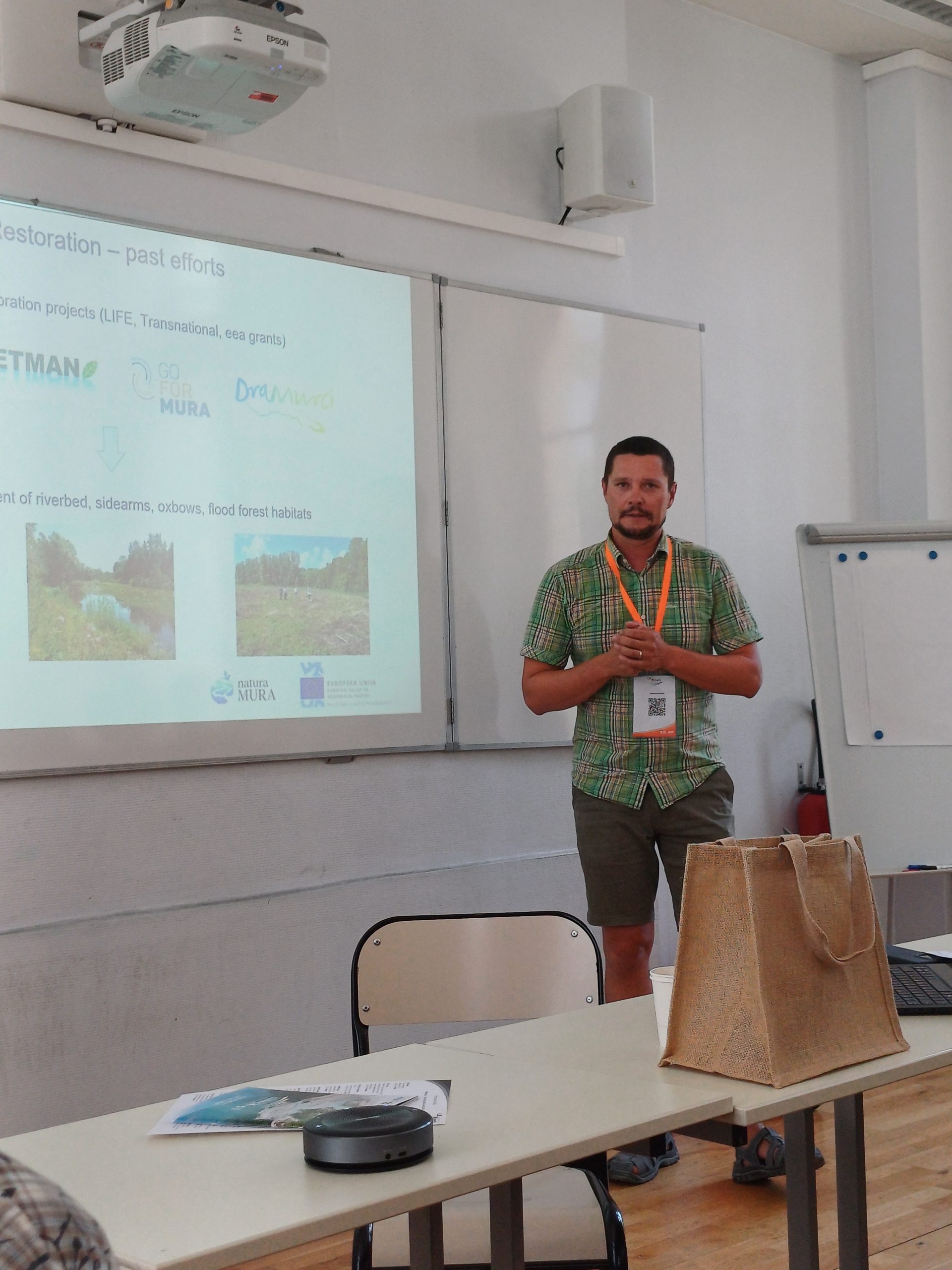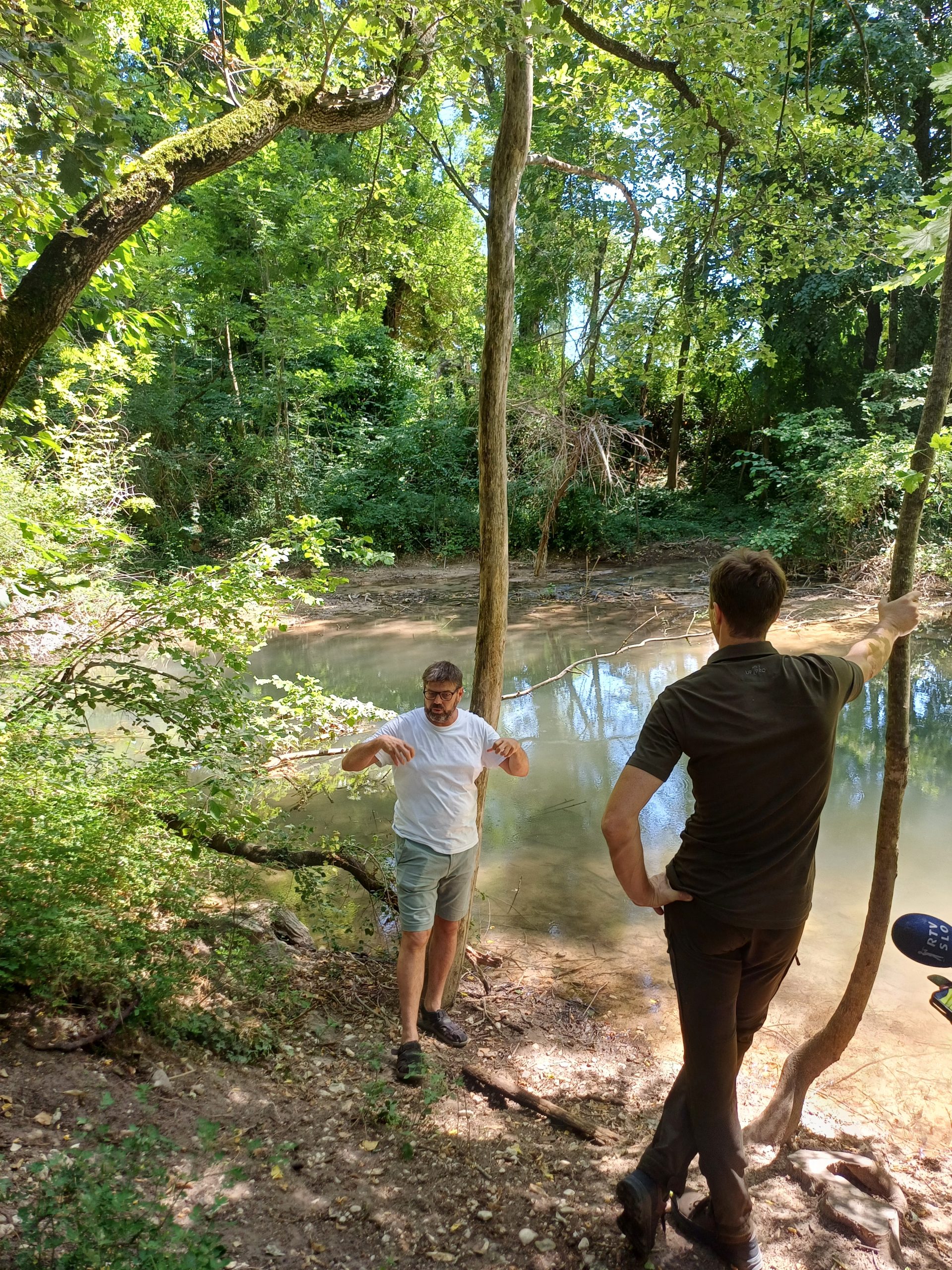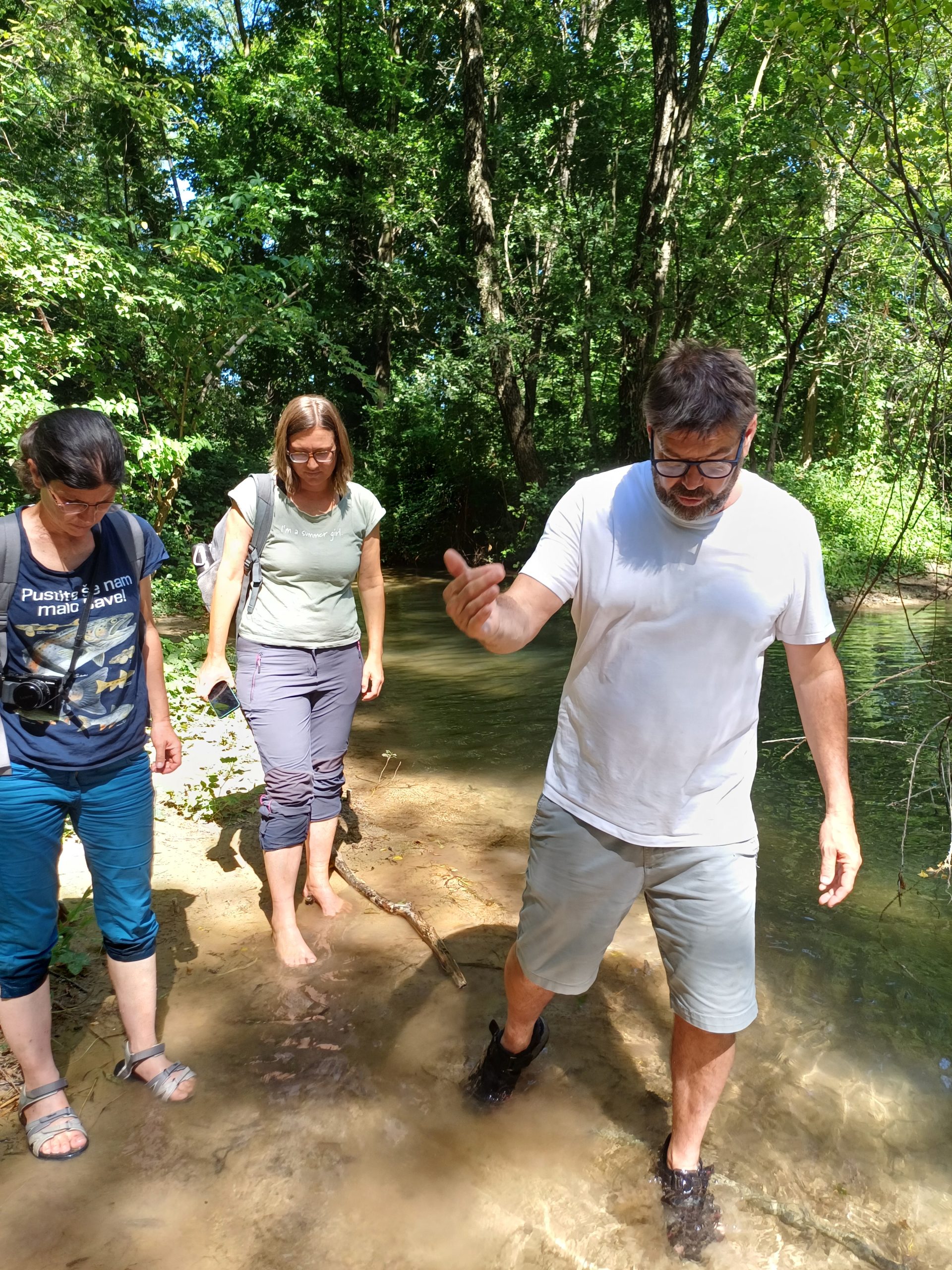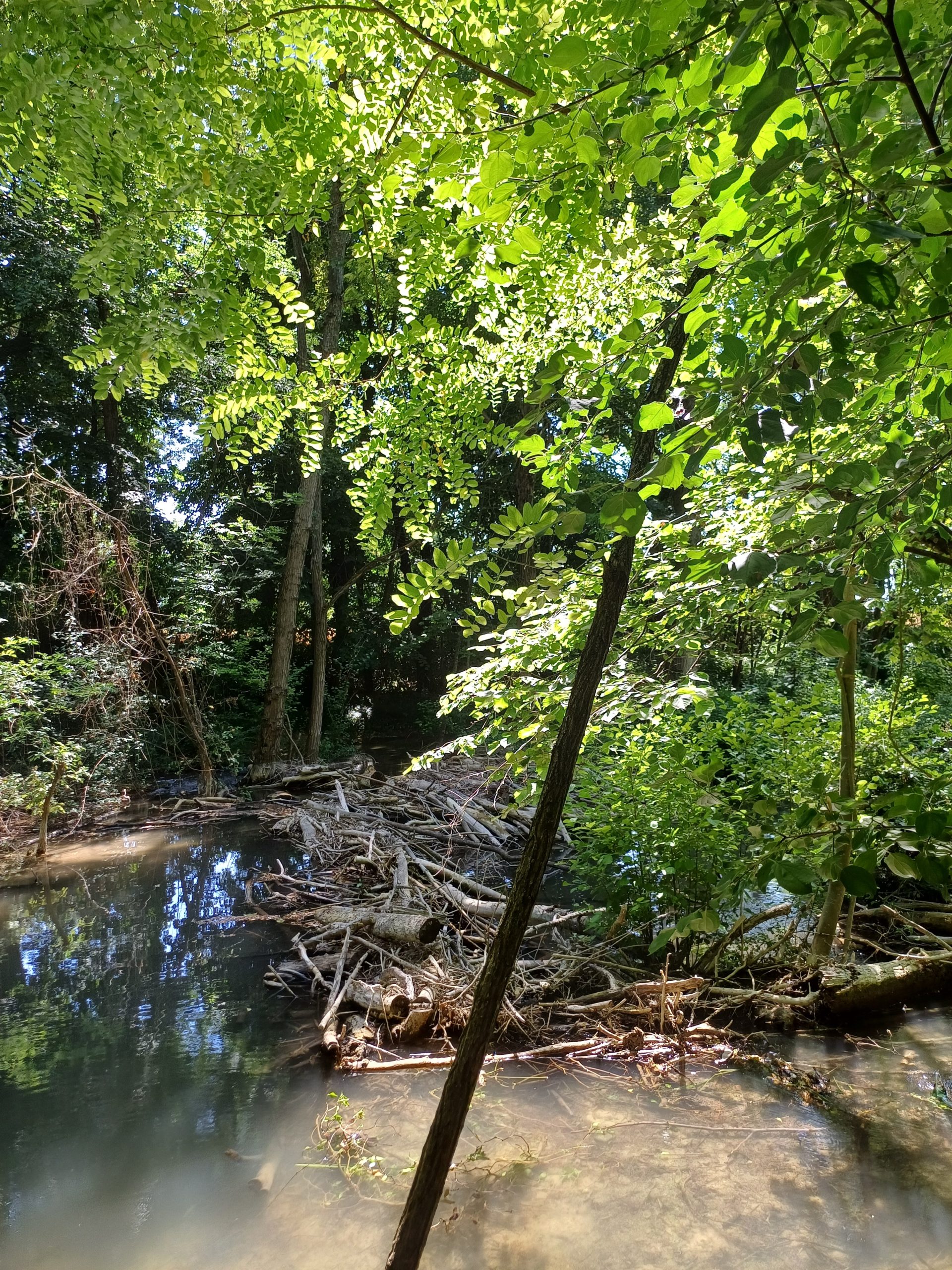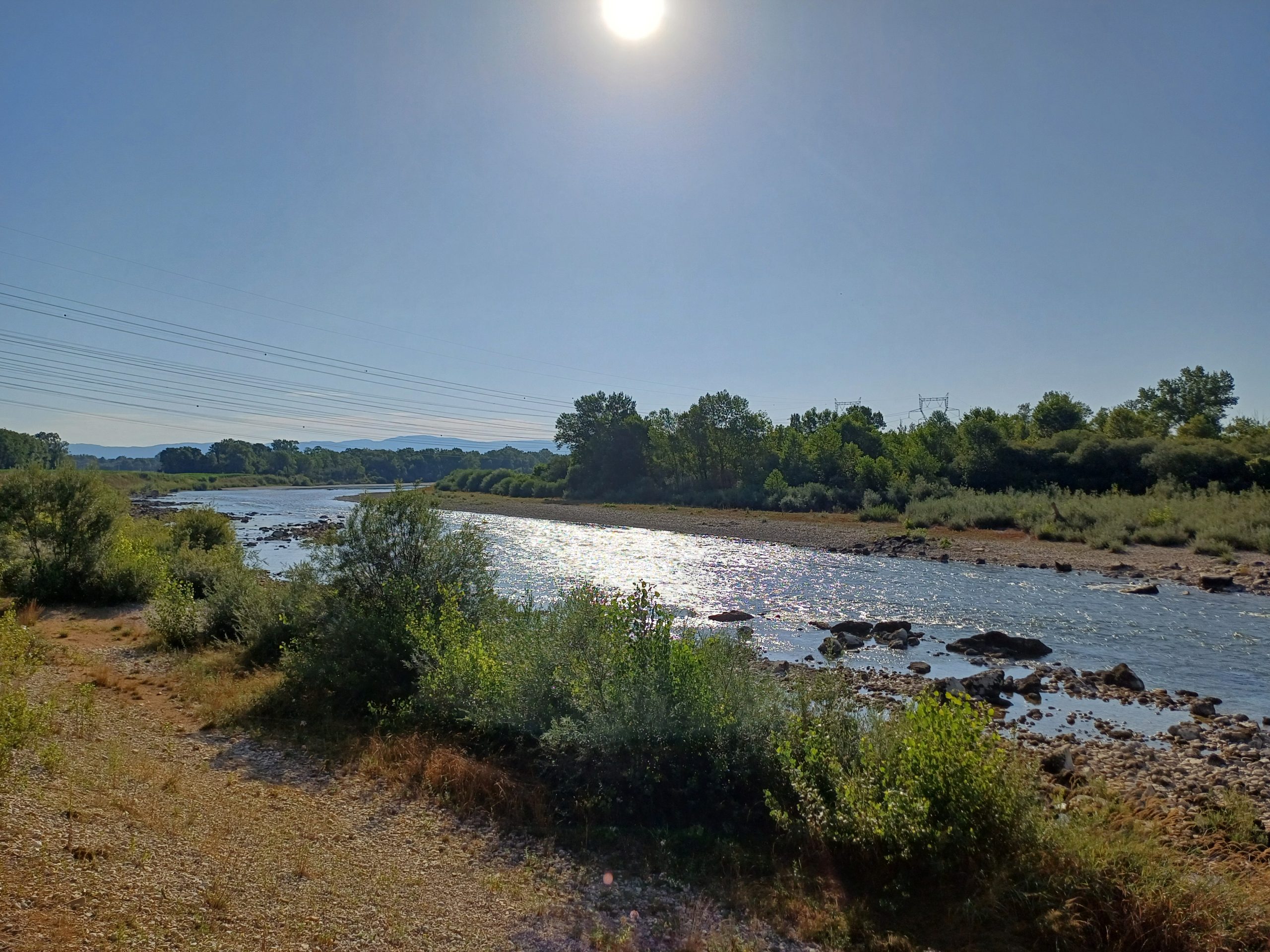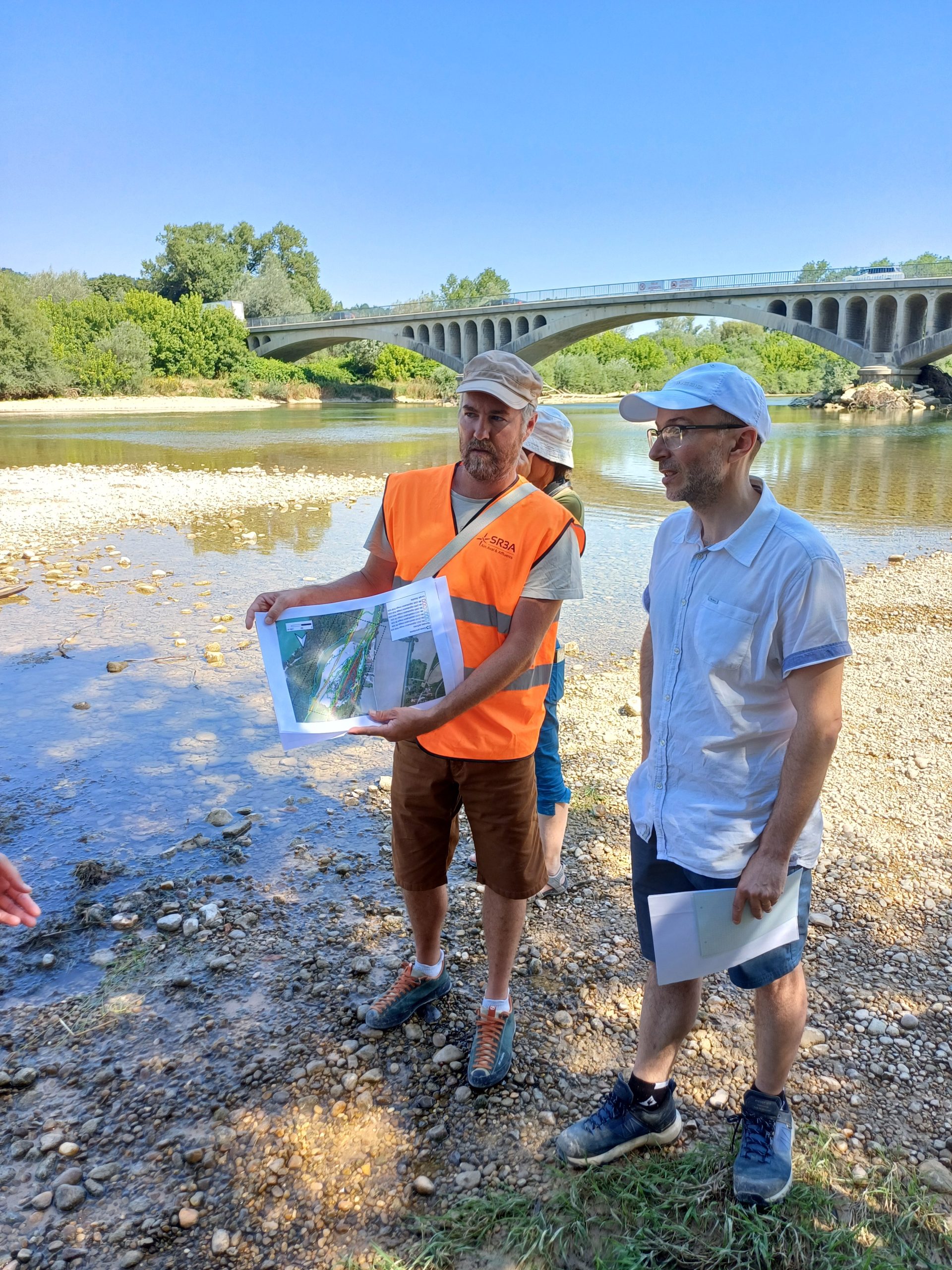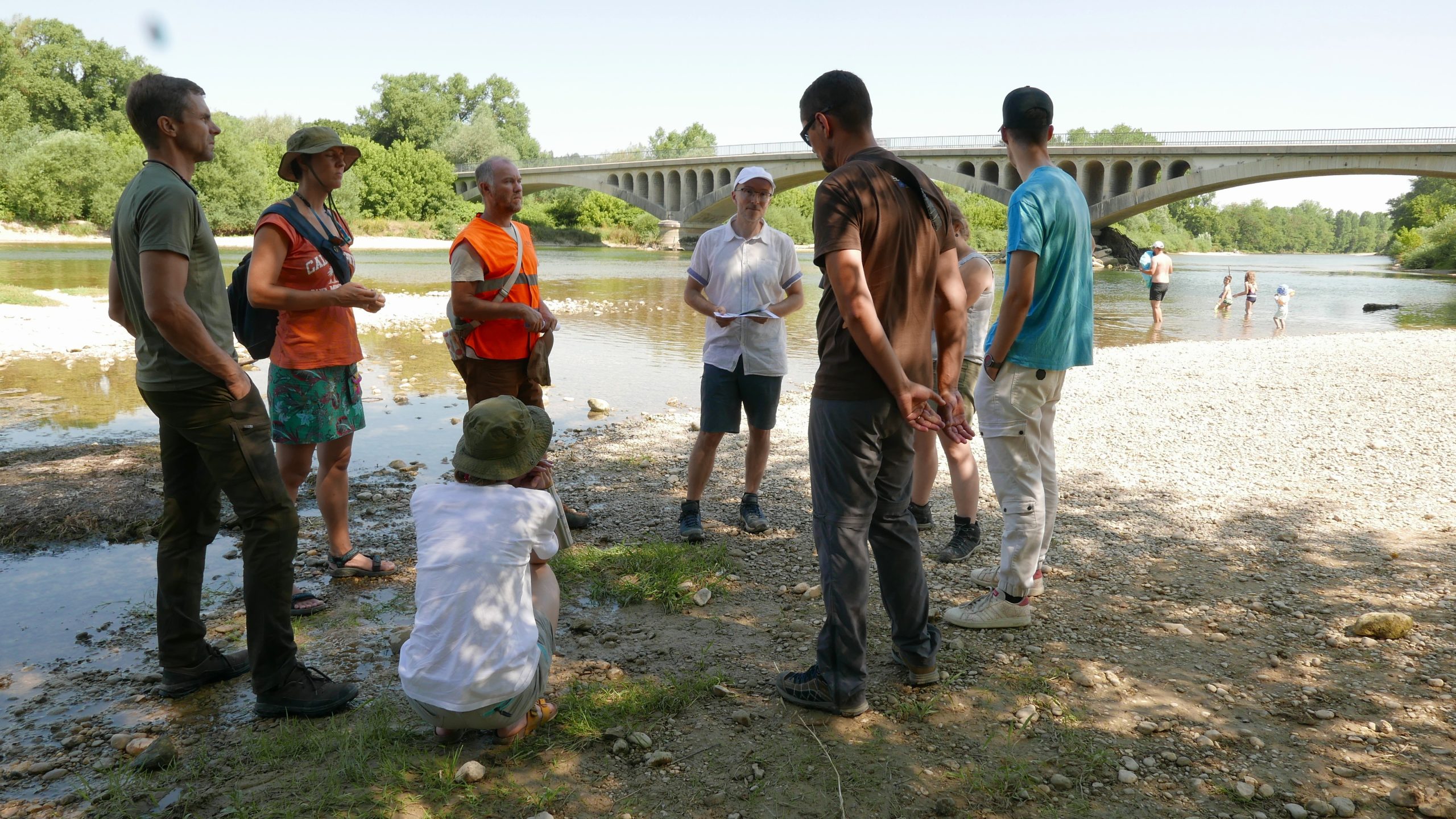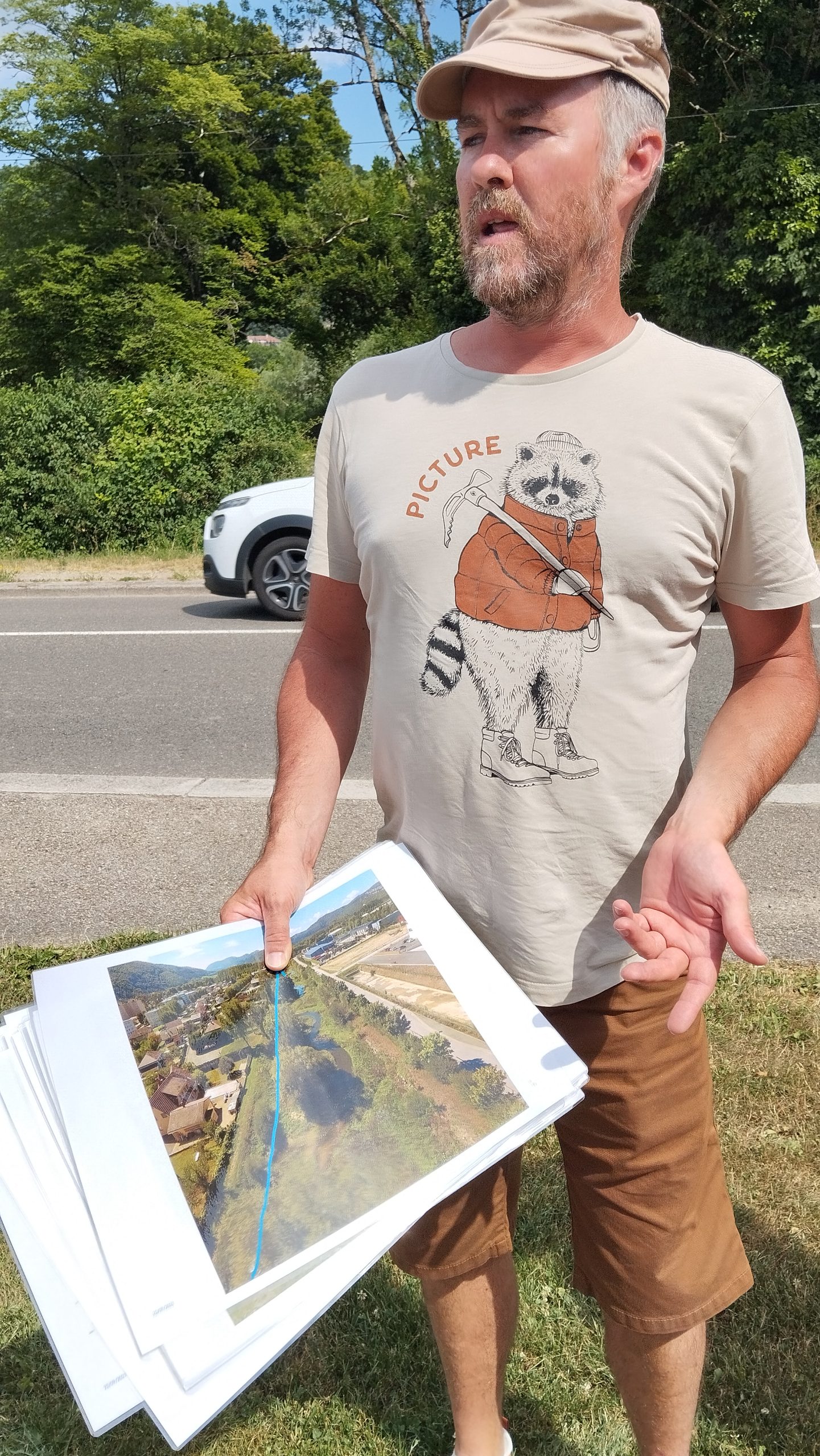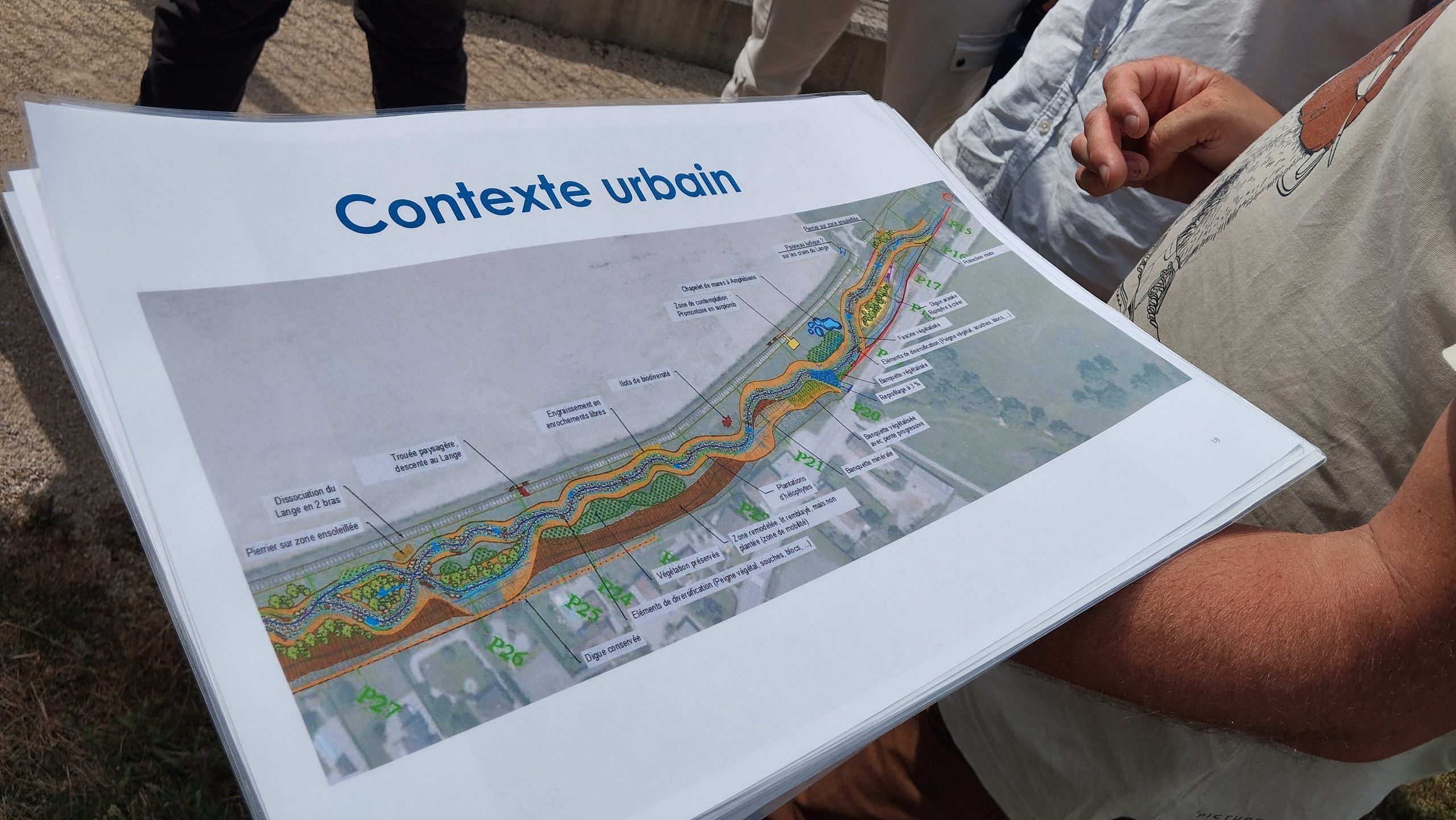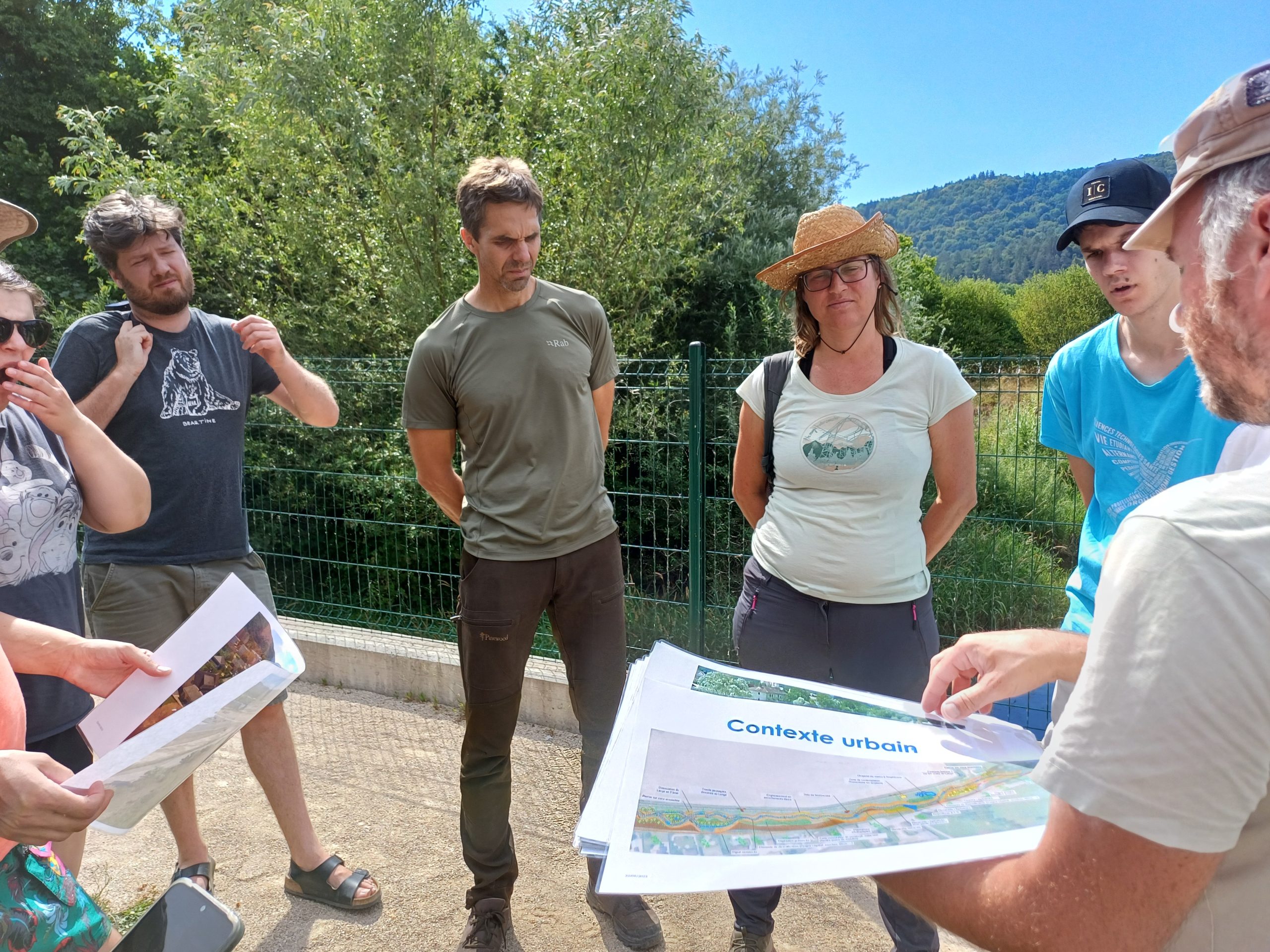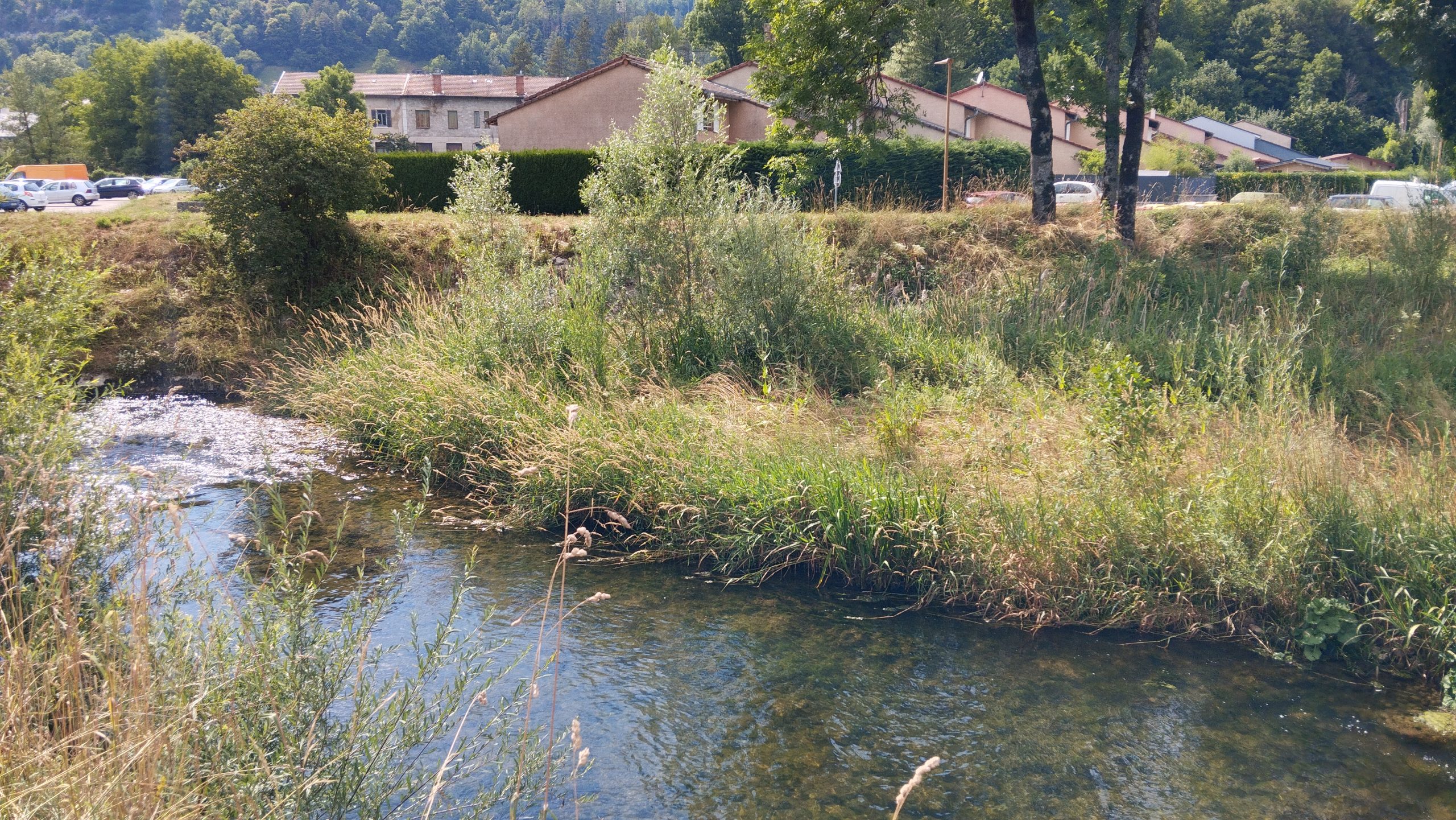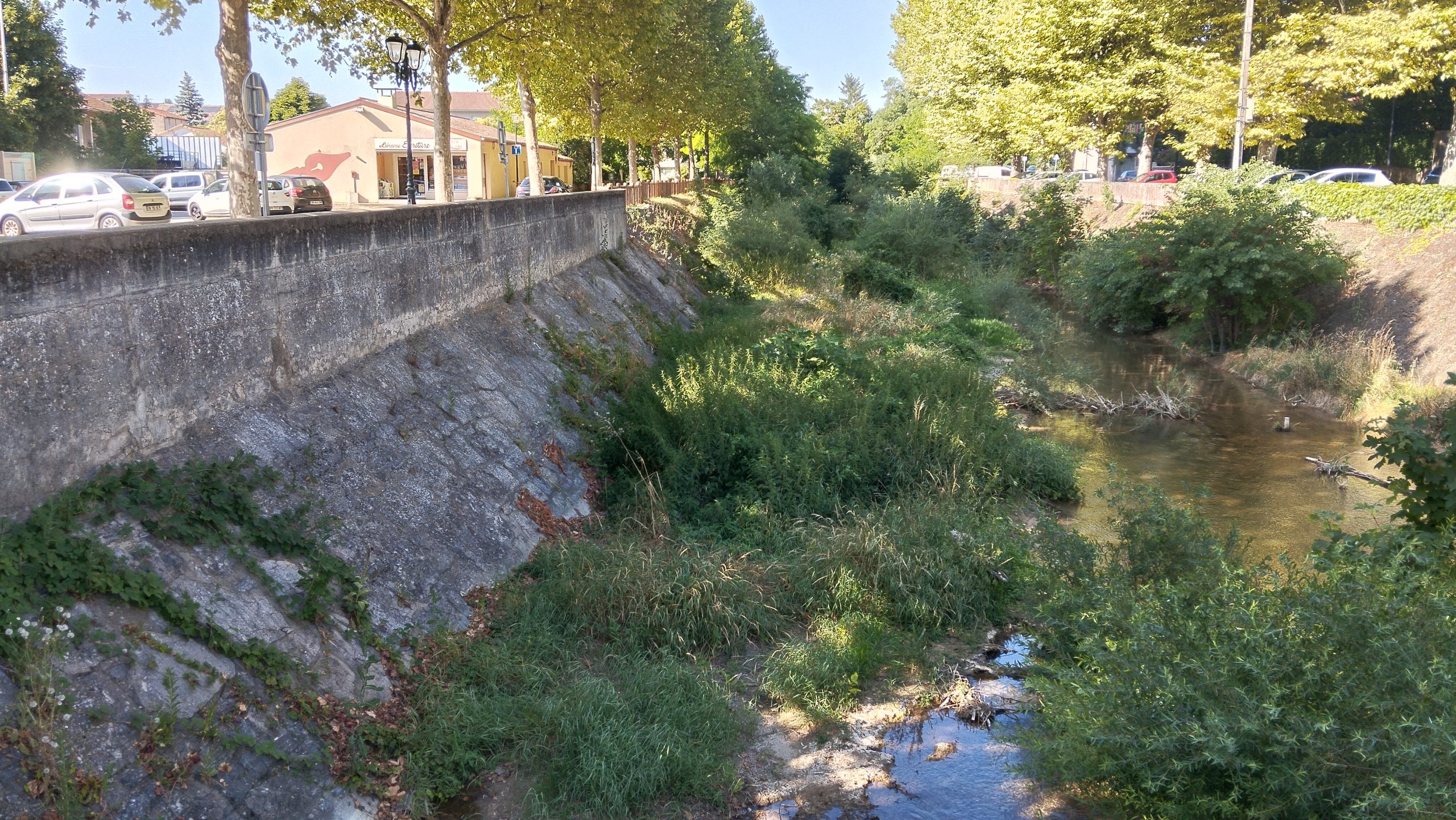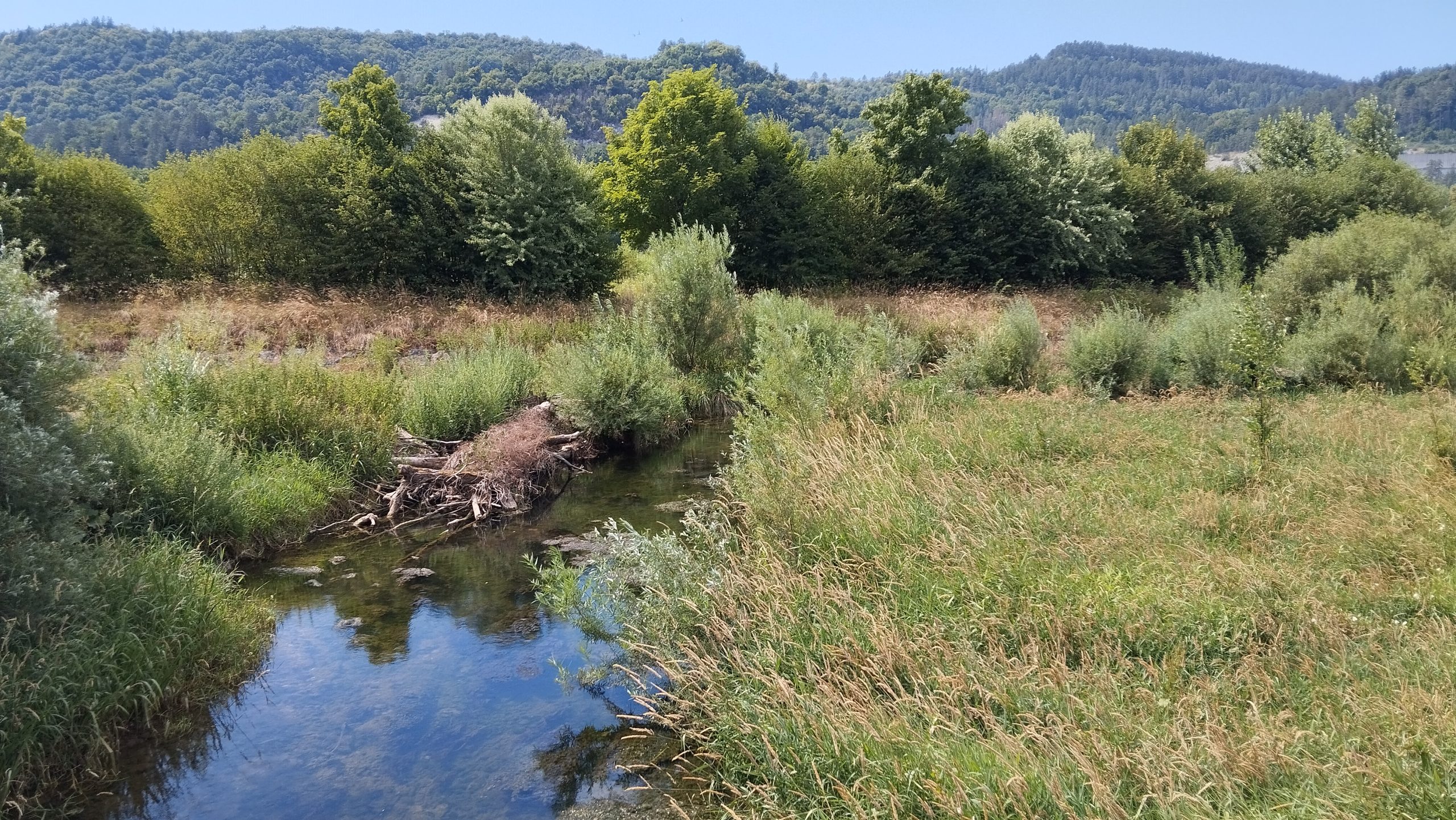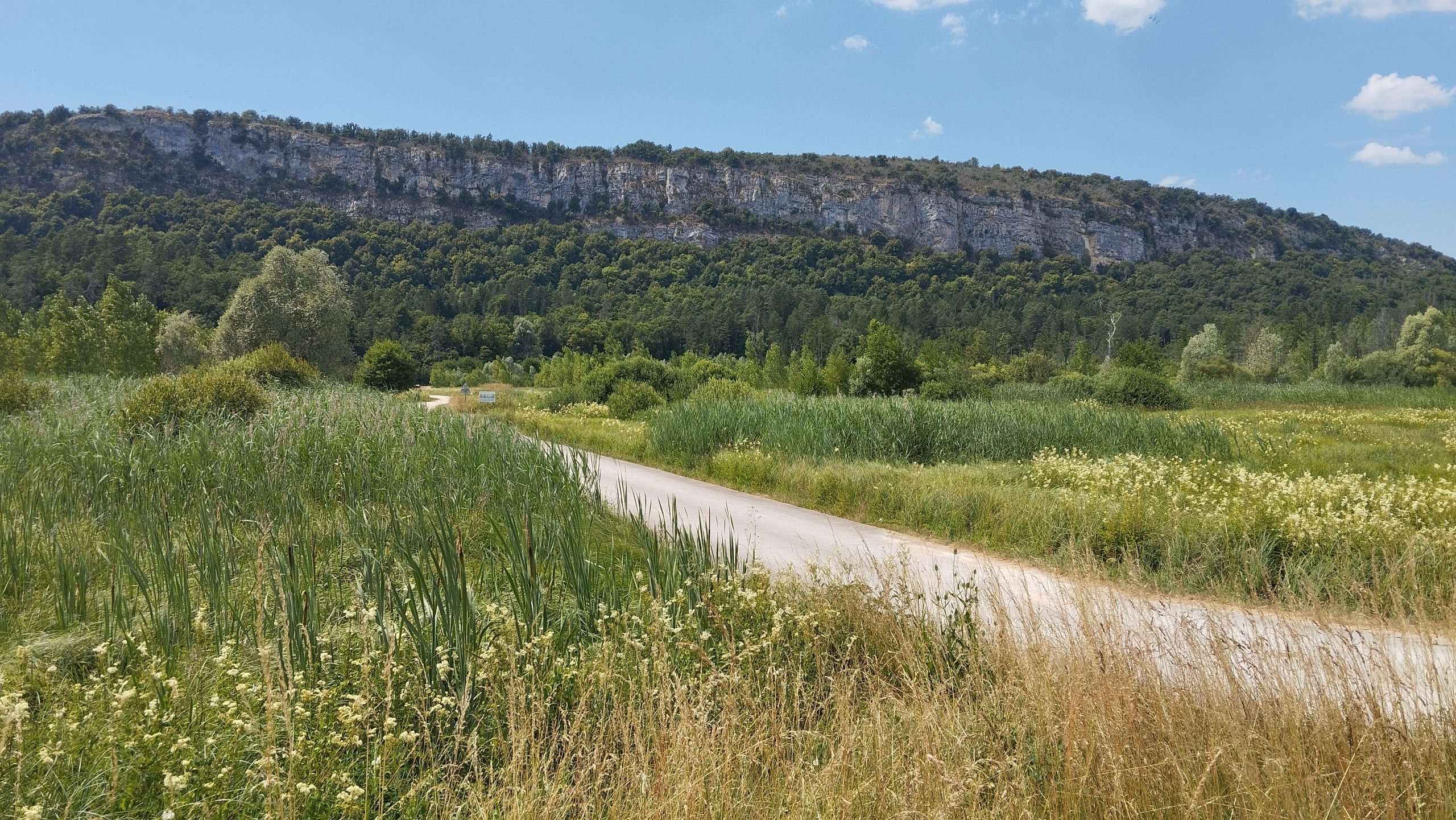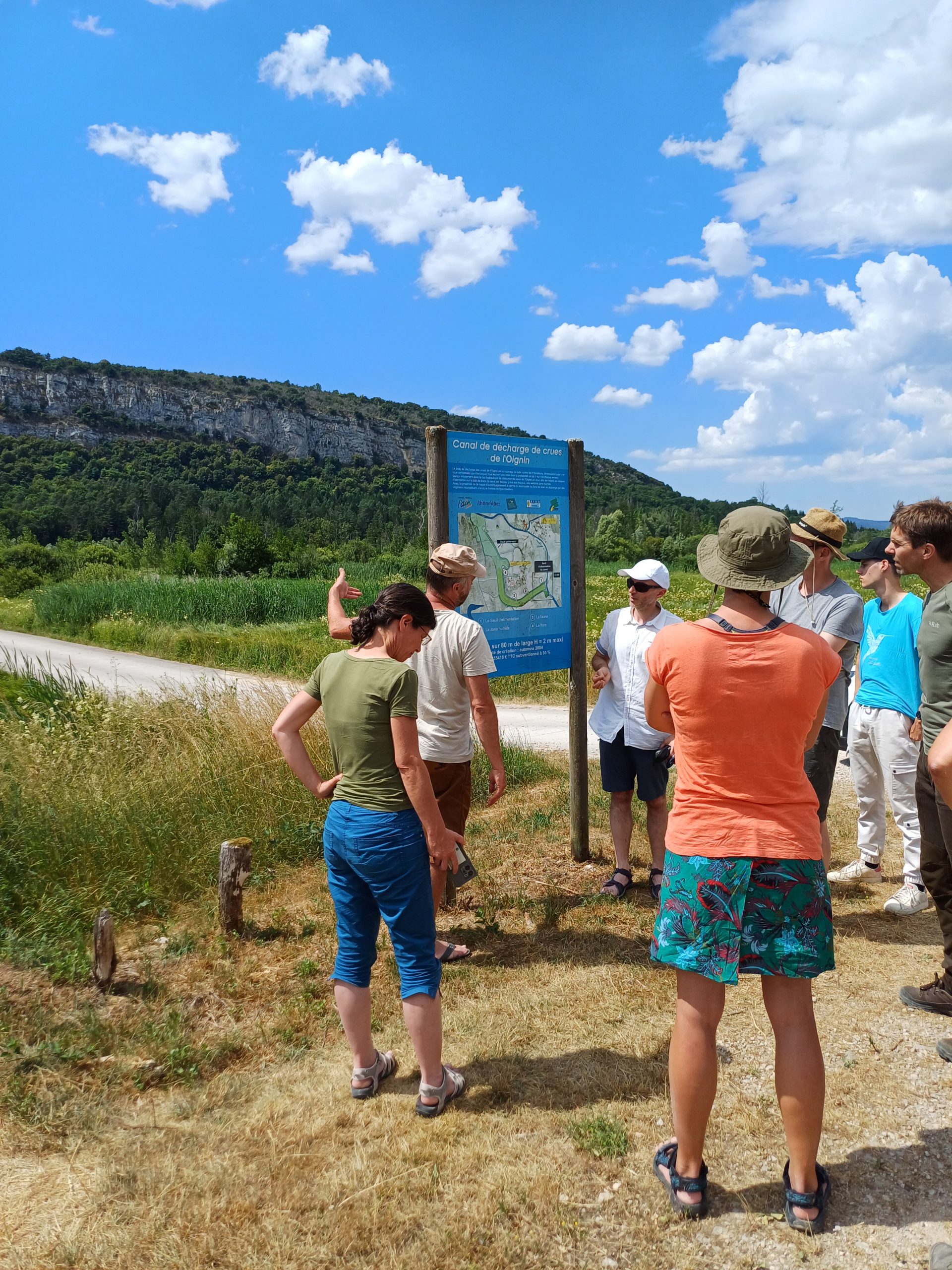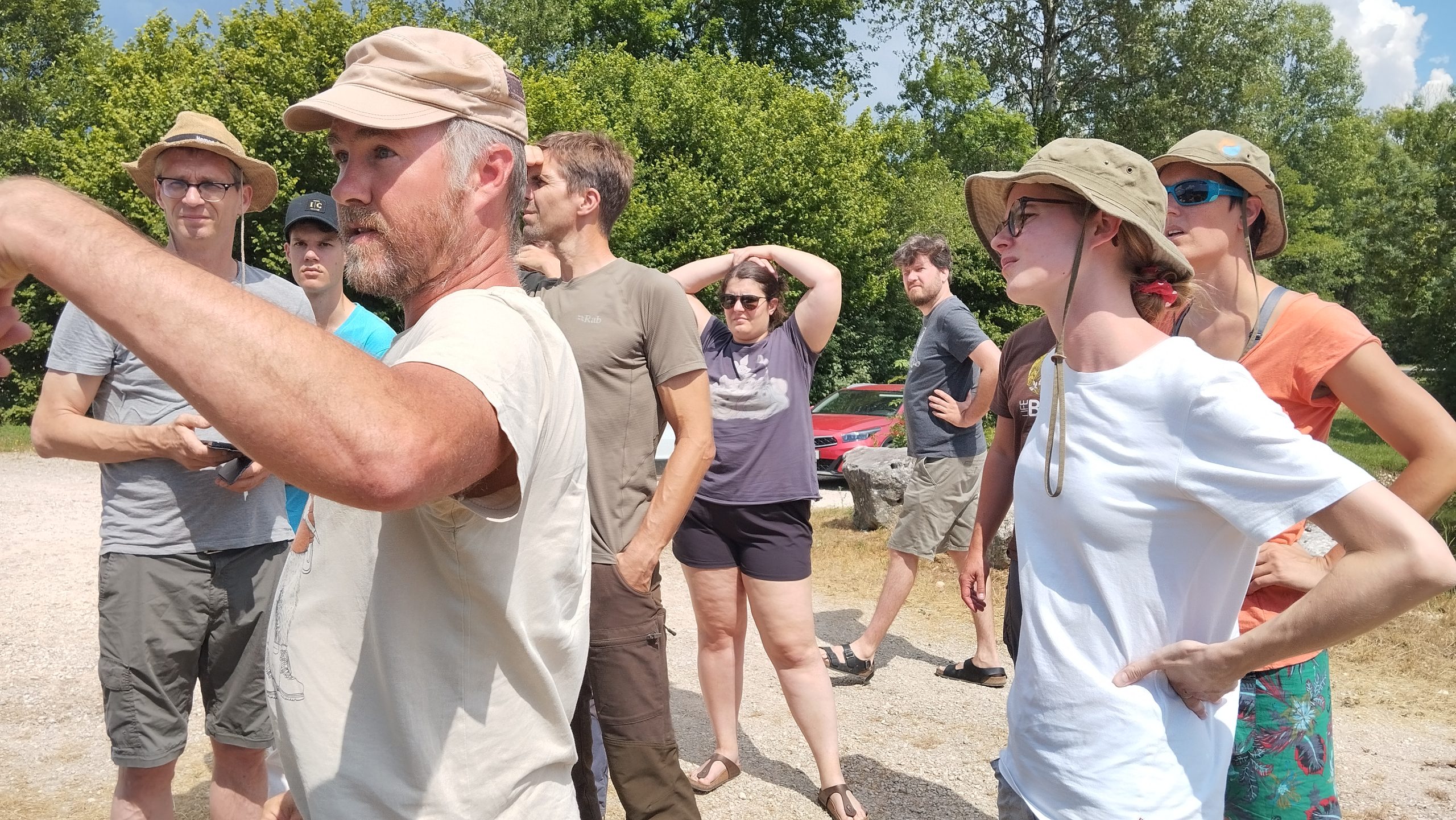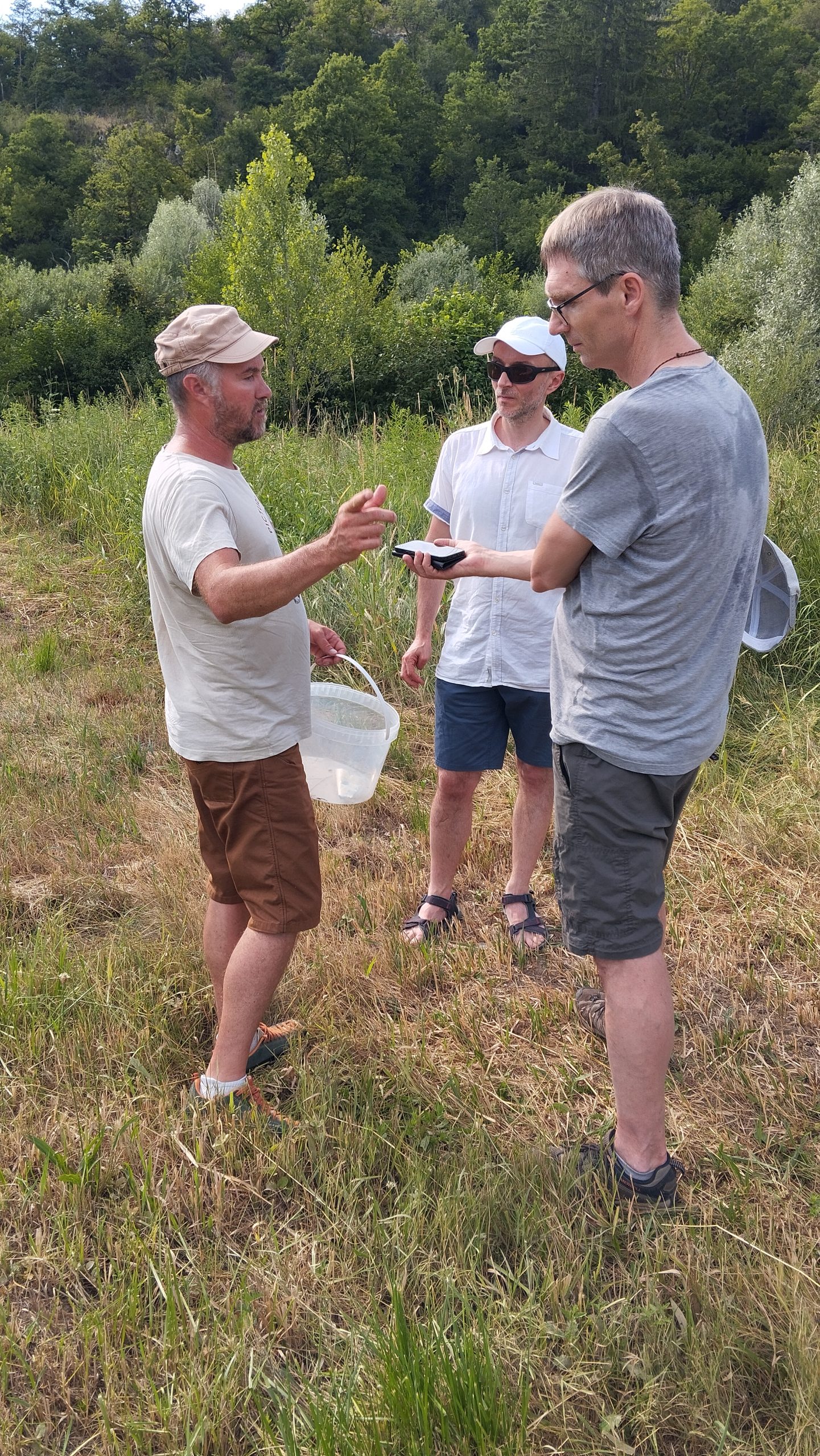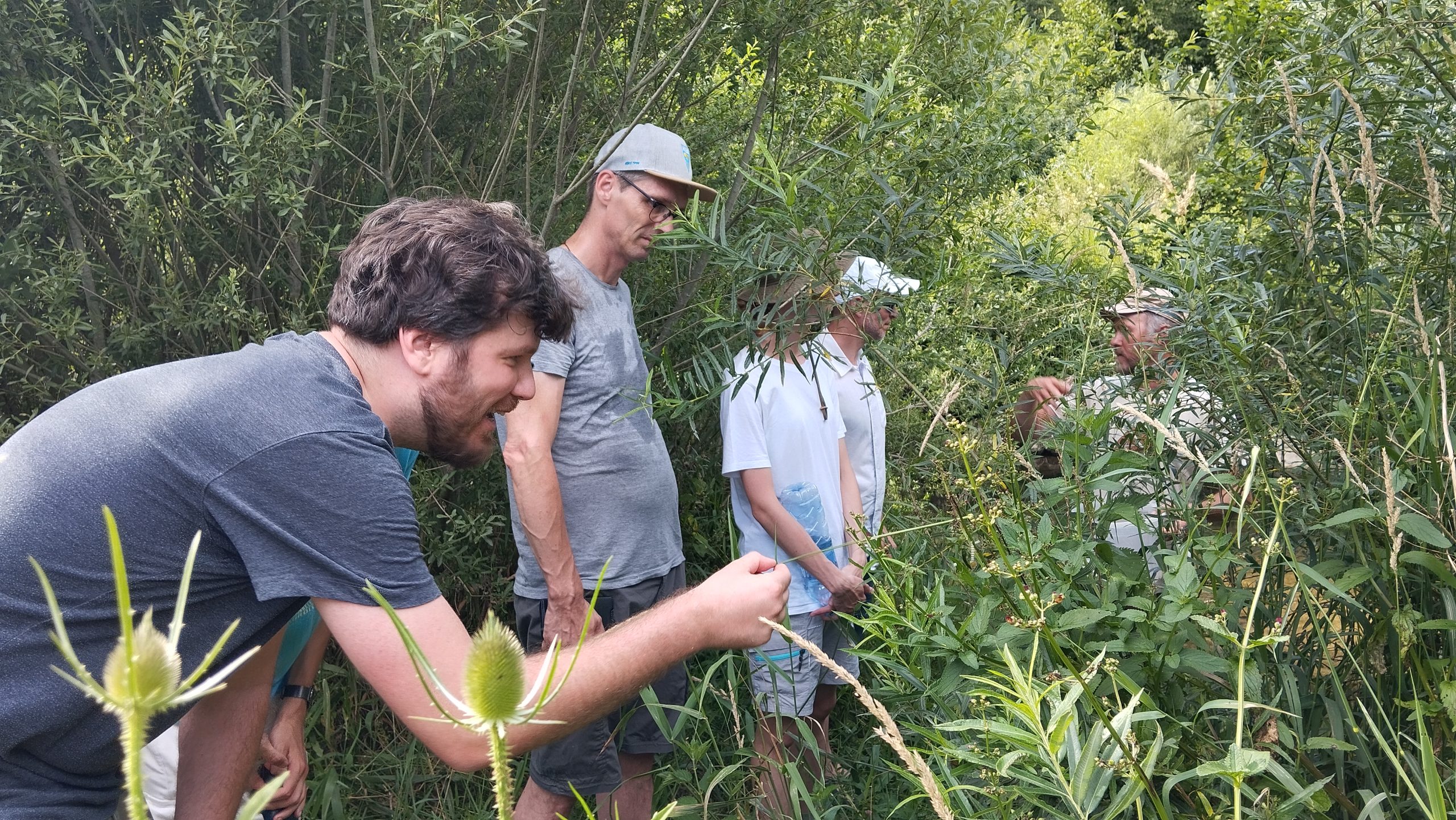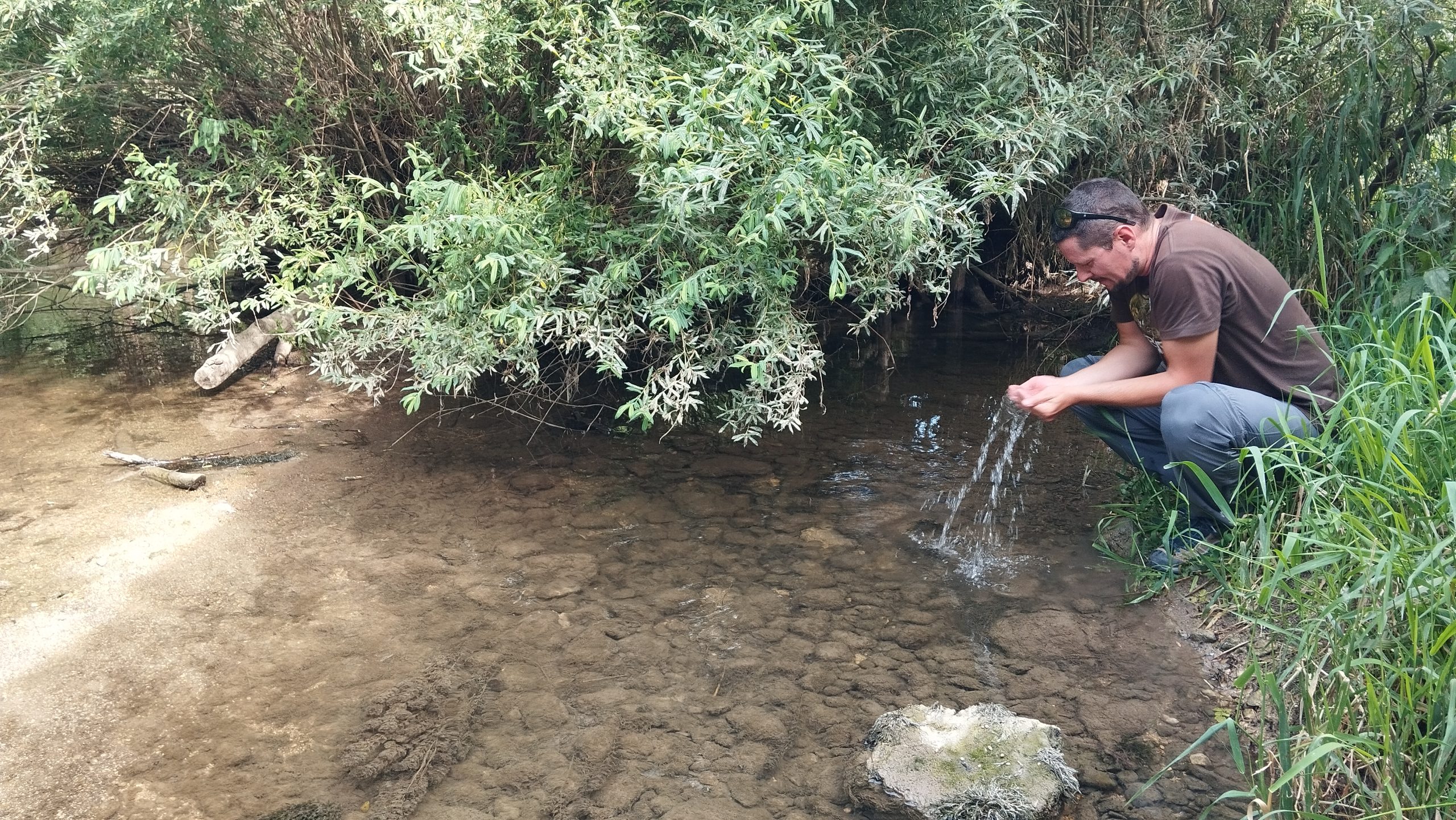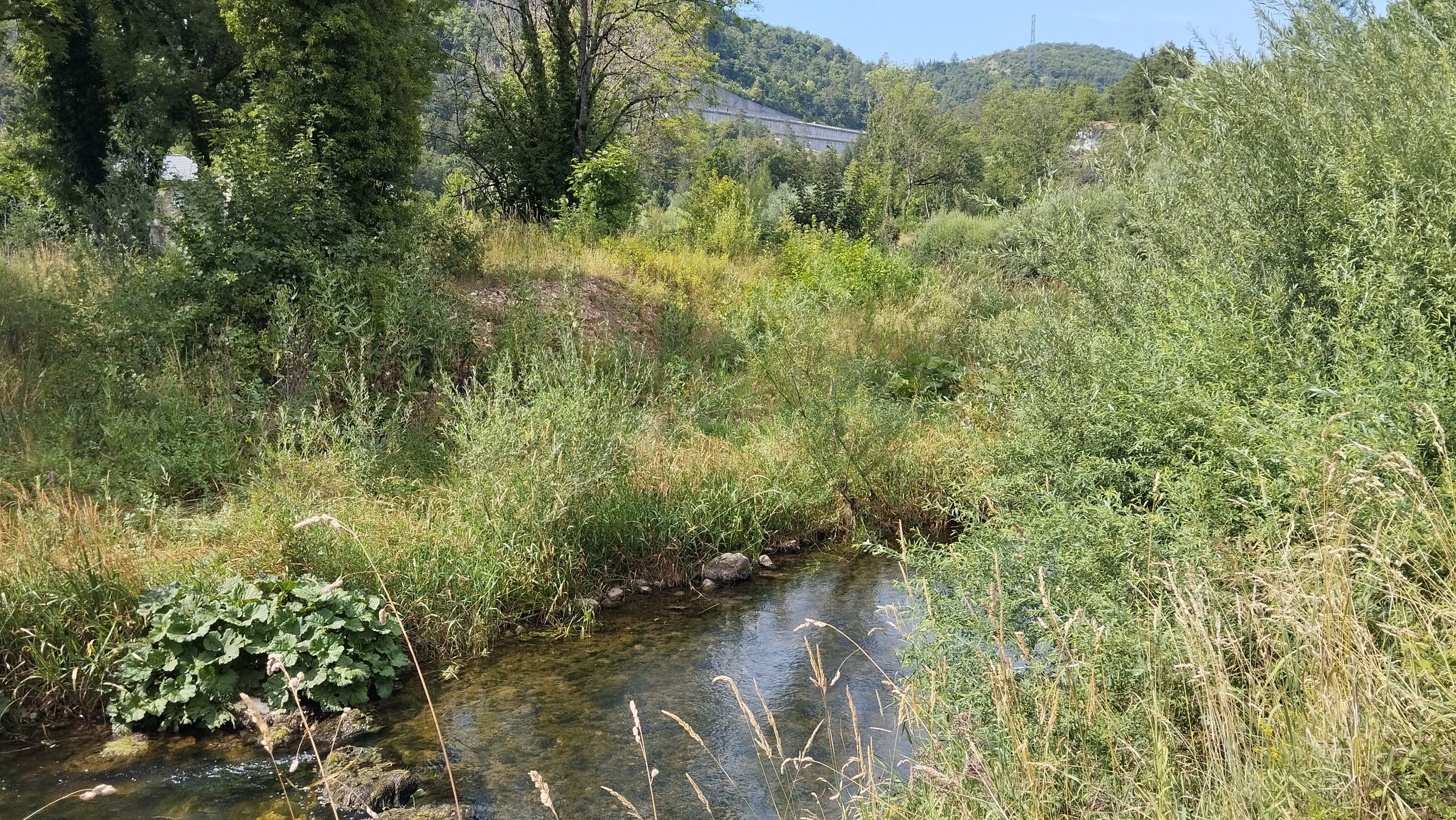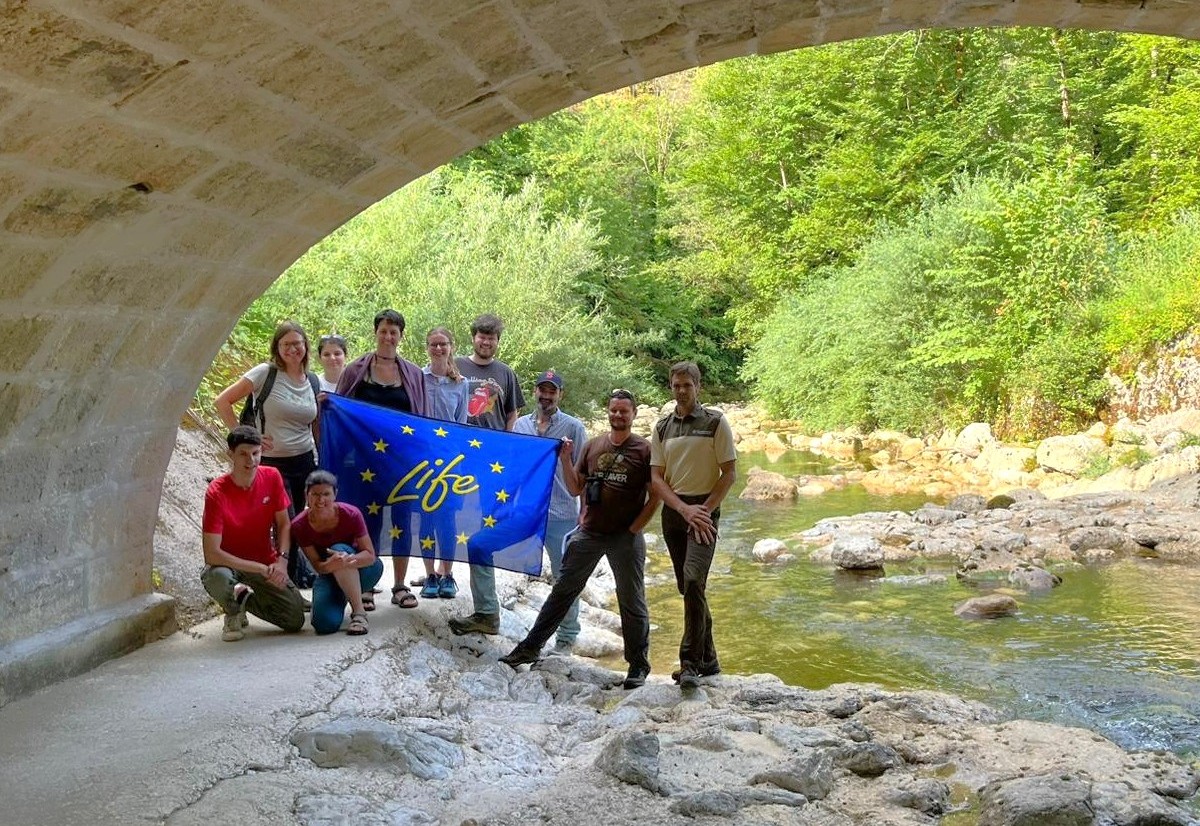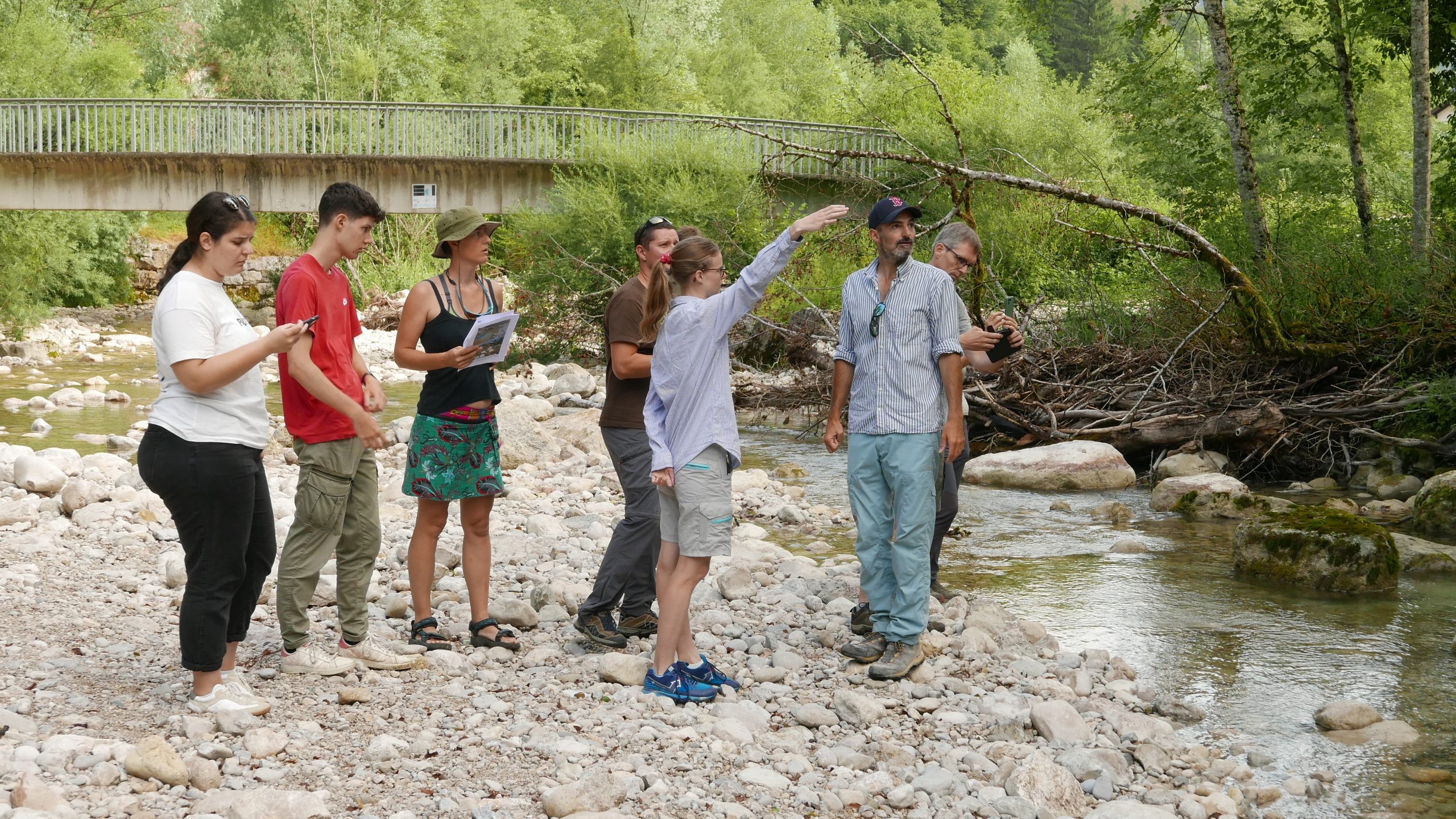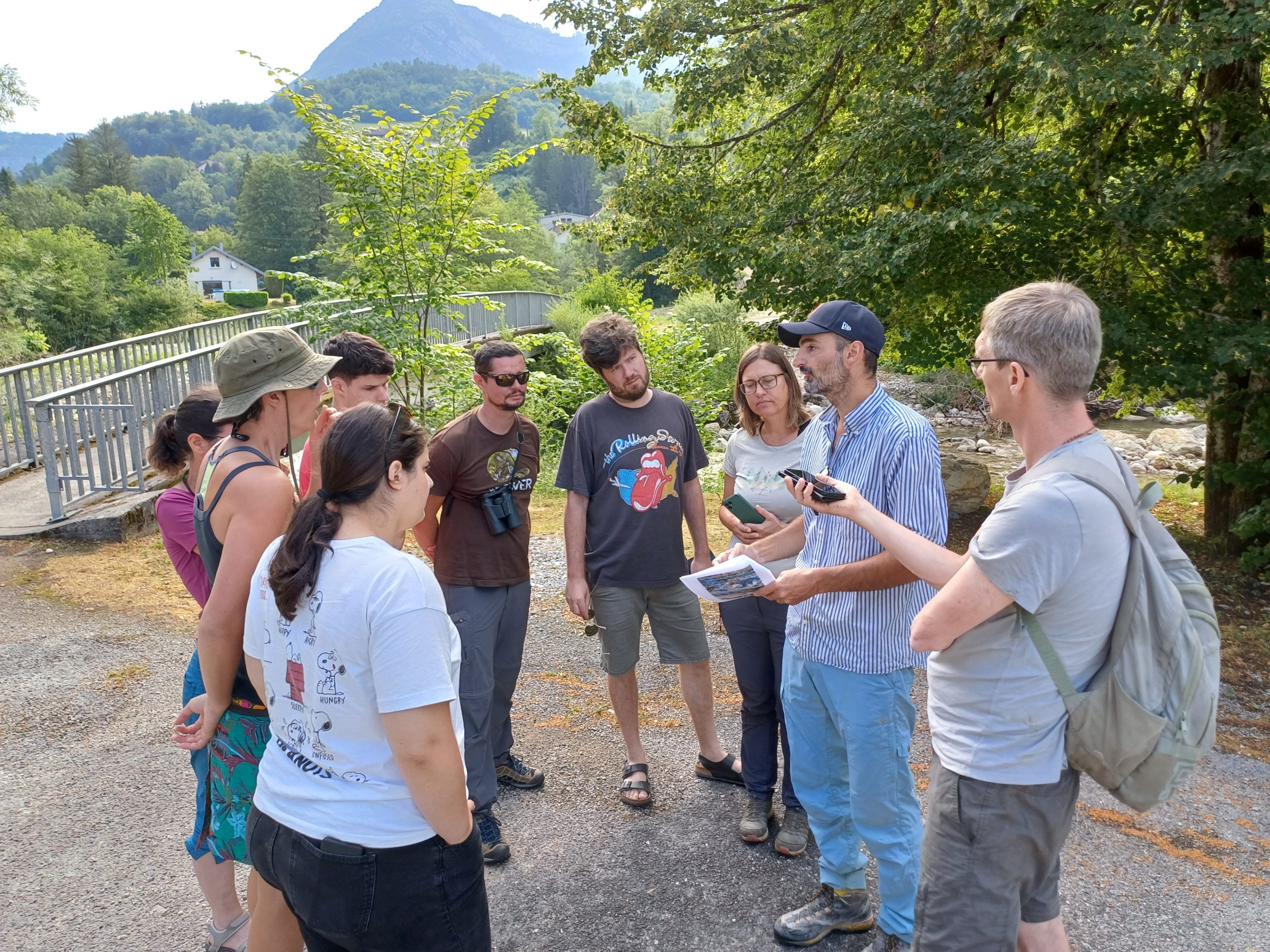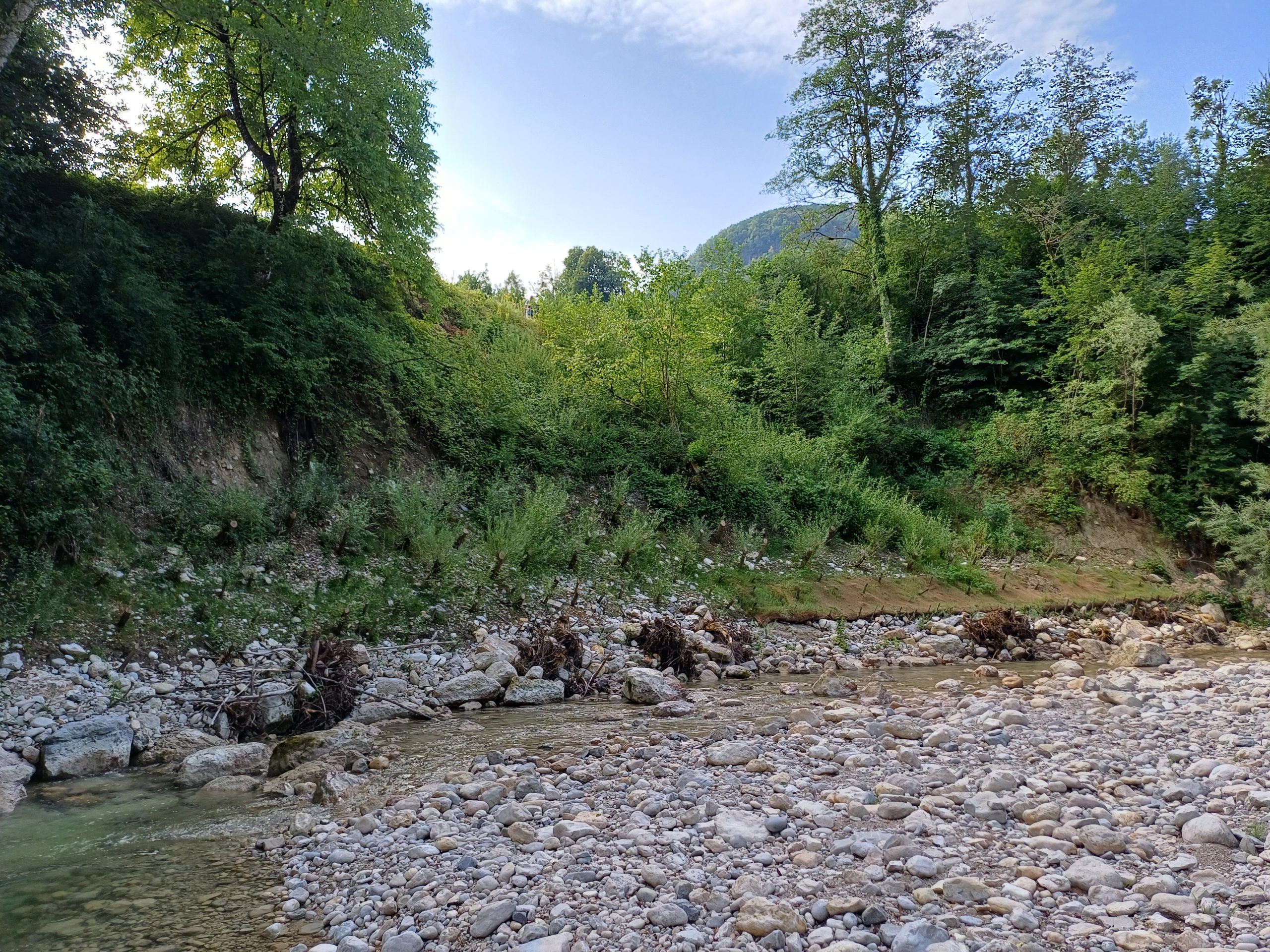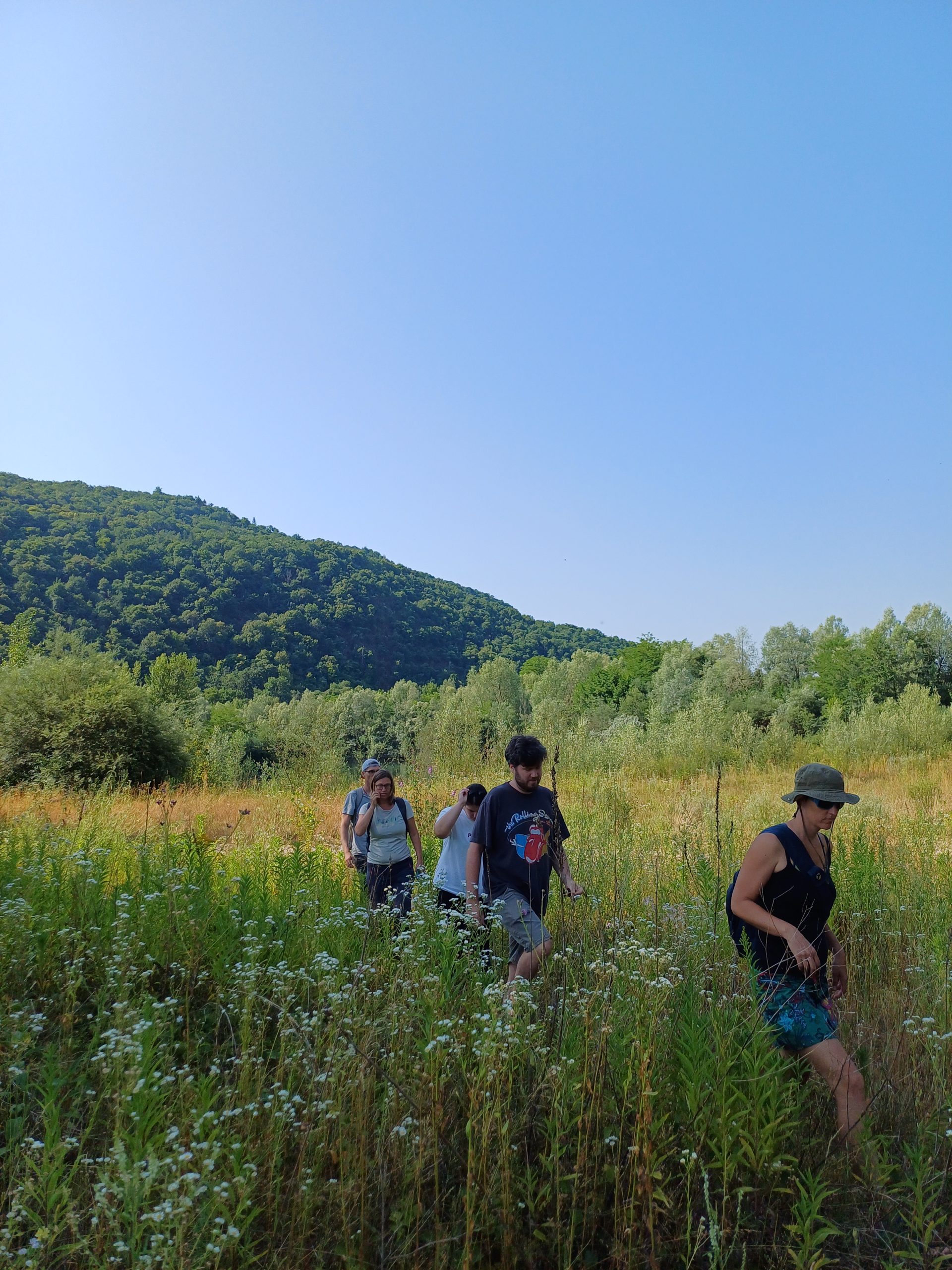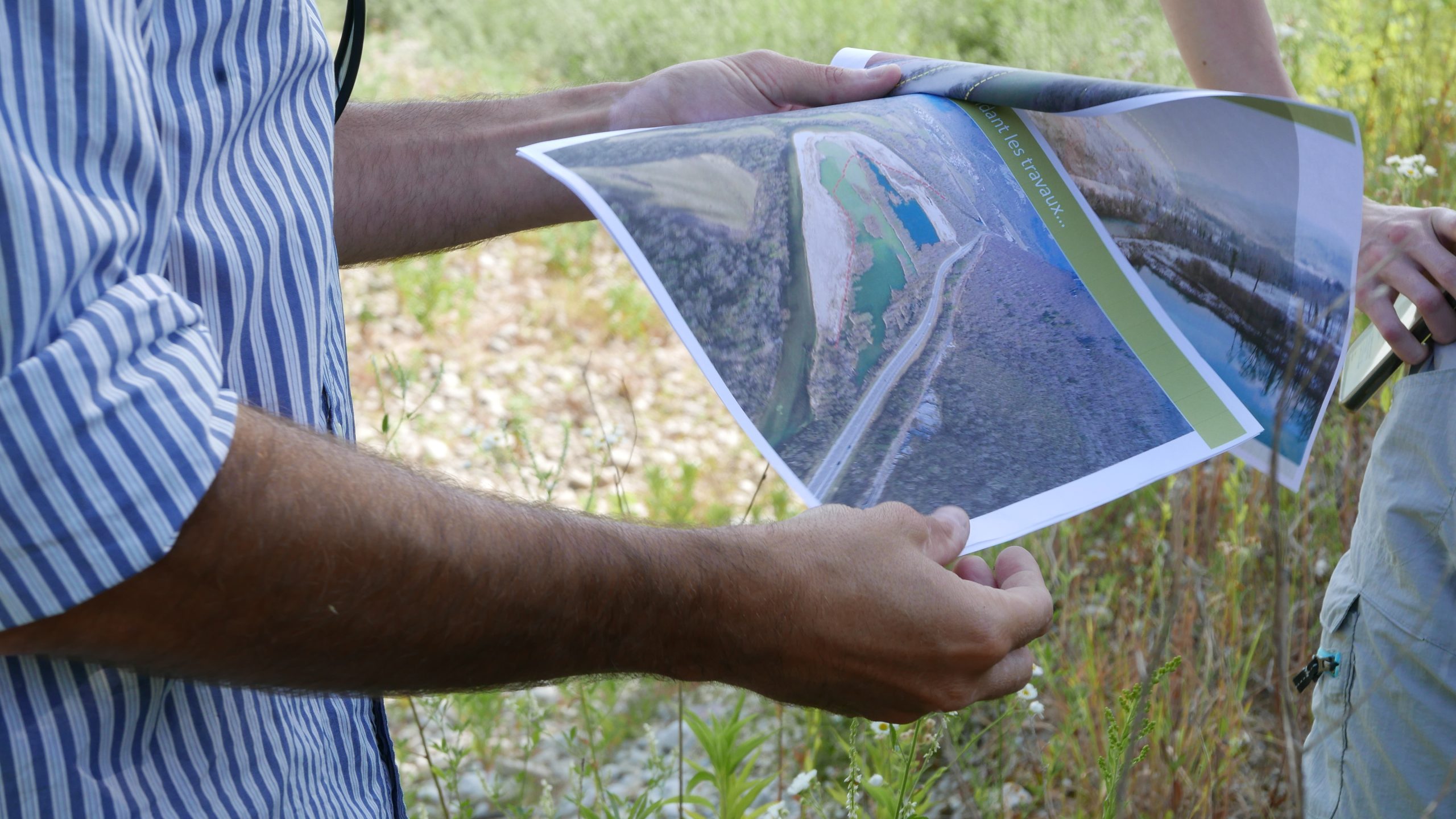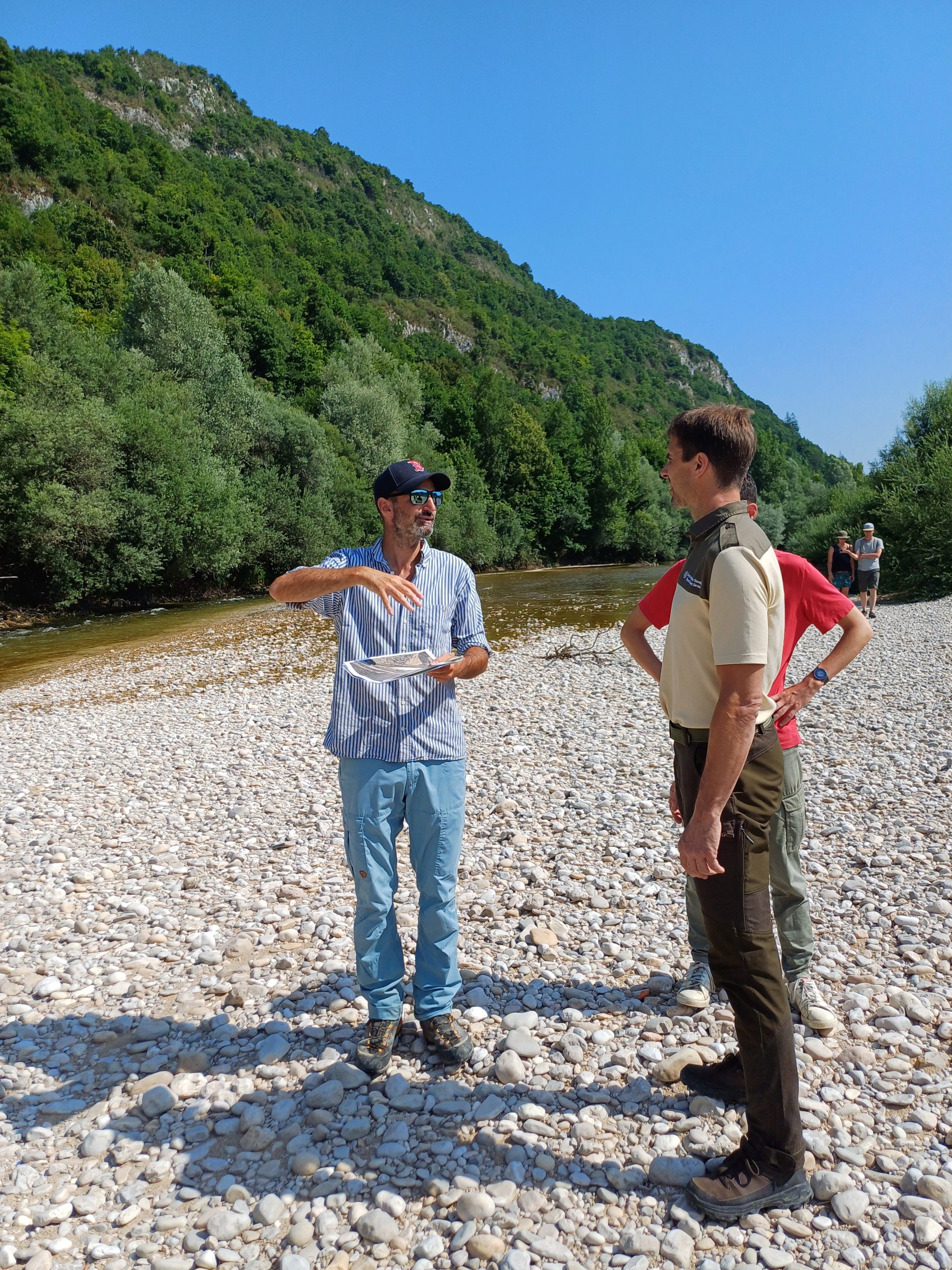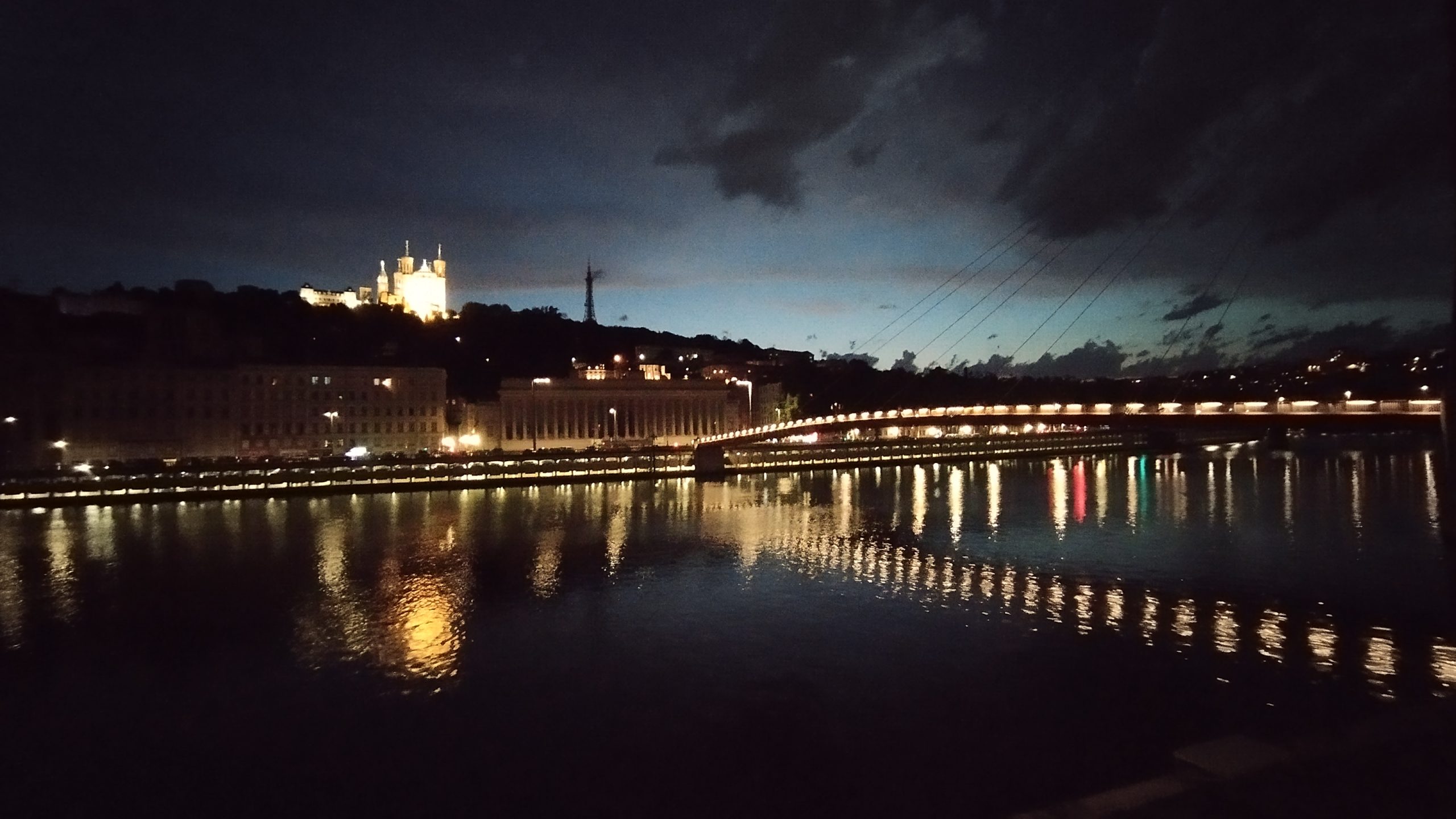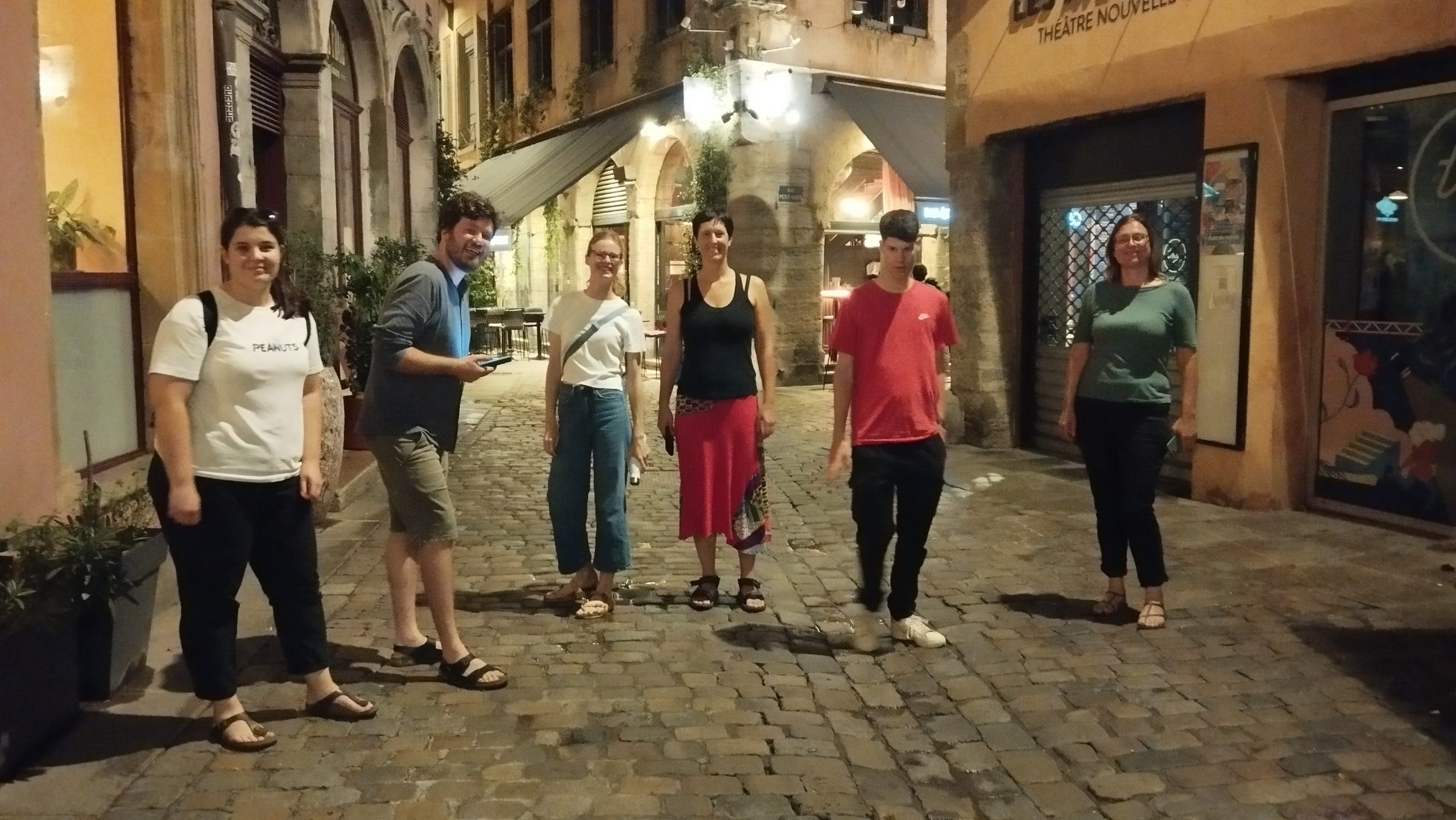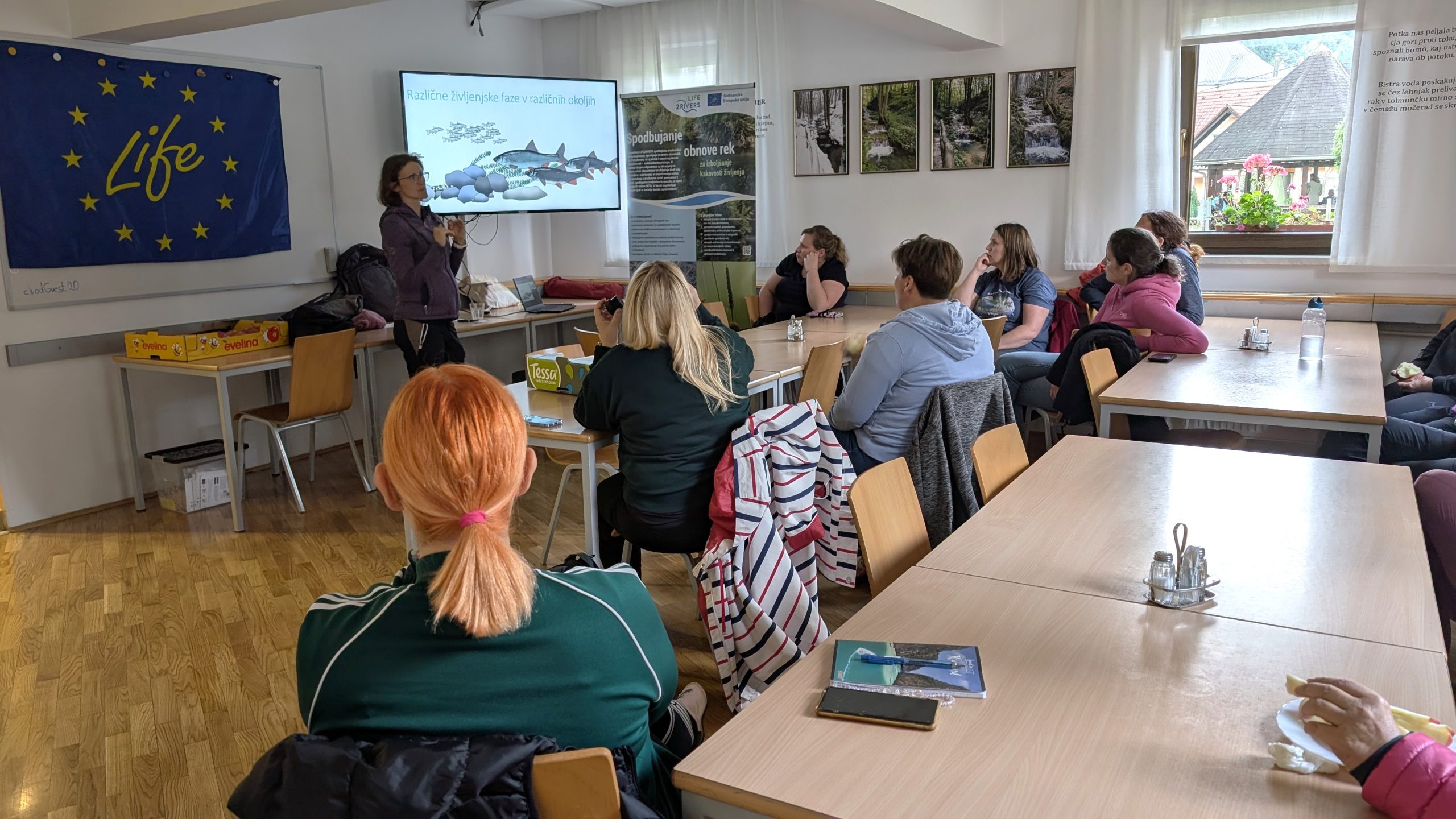The excursion to the Rhône River basin in France, held from June 29 to July 4, 2025, was attended by six members of the LIFE2RIVERS project team and four external guests — representatives of the Slovenia Forest Service, the Slovenian Institute for Nature Conservation, the Ministry of the Environment, Climate and Energy, and a journalist from RTV Slovenia. The purpose of the excursion was to exchange knowledge and experiences among different professional disciplines, researchers, and practitioners, to improve understanding, planning, and implementation of river management and restoration measures, and to strengthen connections and cooperation among various stakeholders in the field of water management. The program of the excursion included visits to various examples of river restoration in the Rhône basin and participation in the I.S.Rivers 2025 conference, which took place at Lumière Lyon 2 University in Lyon.
Excursion to the Rhône River basin: visits to examples of river restoration and participation in the I.S.Rivers 2025 conference
- Andree Goltara (Italian Centre for River Restoration) – Braided rivers in the Alps and the Mediterranean, between conservation efforts and new threats;
- Futoshi Nakamura (Hokkaido University, Japan) – A new perspective aiming at creating nature-positive river management systems in Japan;
- Gabrielle Bouleau (INRAE) – From environmental motifs and motives to environmental justice in watersheds impacted by climate change.
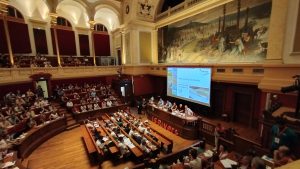
We also took part in a workshop on restoring lateral river connectivity, moderated by Bart Fokkens (ECCR) and Josee Peress (OFB). In the introductory part of the workshop, we listened to presentations of good practice examples from France, as well as a presentation by Aleksander Koren on the work of the Slovenian Institute for Nature Conservation (ZRSVN) in restoring the Mura River ecosystem (Natura Mura project). We also discussed the effects of restoration measures at the catchment level and the concept of “space for the river,” which ensures that rivers are provided with adequate room to function naturally.
The conference days were intertwined with visits to various locations around Lyon, where a wide range of successful river restoration projects have been implemented. Near the town of Valence, Cedric Cadet (Valence Romans Agglo) presented a project on the imitation of beaver dams on the Lierne stream. The aim of the project is to address the problem of channel incision caused by past river regulation, which has led to a lowering of the groundwater level. The effects of these semi-natural structures are being regularly monitored, and observations show that sediment is once again accumulating in the streambed, while some of the stream’s side channels have naturally reconnected. The technique of building structures that mimic beaver dams was adopted from the United States, and the project is being carried out in collaboration with experts from California.
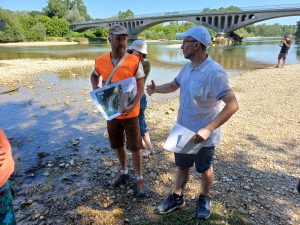
Benoit Terrier (Agence de l’eau Rhône Méditerranée Corse) and Cyril Frequelin (organization SR3A) guided us through two sites along the Ain River, where the concept of “space for the river” has been successfully integrated into spatial planning. They also reached an agreement with a local hydropower plant to mitigate extreme fluctuations in water flow (hydropeaking) caused by its operation. The local organization SR3A, which brings together a wide range of stakeholders and operates as a kind of “river syndicate,” places strong emphasis on communication with landowners. Over time, these landowners have come to accept the “space for the river” concept as an appropriate solution for reducing flood risk—without demanding financial compensation or the purchase of their land located within the designated river space. We also visited an example of stream restoration along Le Lange, between the settlements of Martignat and Montréal-la-Cluse, in a valley historically shaped by the plastics industry. We explored sections in urban, semi-urban, and rural environments, where Mr. Frequelin convincingly demonstrated that restoration measures can be successfully implemented even in areas with very limited space, such as in the middle of urban settings. He once again emphasized the importance of effective stakeholder communication and the science-based restoration designs. Among other things, we observed lush riparian vegetation that had been carefully preserved during the project, effectively preventing the spread of invasive species—a practice quite different from what we are used to see in Slovenia.
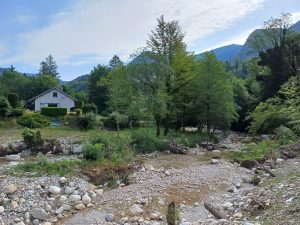
On the final day, we were inspired by the exceptional enthusiasm of Romain Bellier from the protected area Parc Naturel Régional du Haut-Jura. Our visit to the projects under his leadership began at a bridge over the La Bienne stream, a few kilometers upstream from the town of Saint-Claude, where an obsolete river barrier had been removed, reconnecting several kilometers of the stream with its headwaters. In the town itself, he showed us a flood risk reduction solution that allows natural hydromorphological processes to function as freely as possible within the spatial constraints. The banks were reinforced against erosion only where absolutely necessary, using wooden crib walls and willow brush mats. We concluded the excursion by visiting the restoration of the natural braided channel of the La Bienne River near the town of Jeurre. There, the reconnection between the river channel and a former gravel pit reactivated natural hydromorphological processes, widening the river corridor from 30 to 120 meters. Since the old gravel pit—filled with a large volume of water—had represented a “ticking flood bomb” for downstream communities, this ambitious renaturation project not only restored the river ecosystem but also significantly reduced flood risk for many residents. It is an outstanding example of a nature-based solution, welcomed not only by people but also by beavers, fish, a variety of bird species, and specialized plants and insects.
